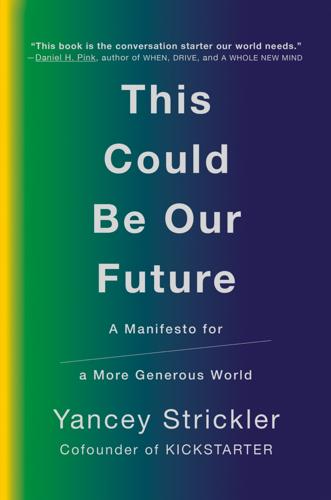
This Could Be Our Future: A Manifesto for a More Generous World
by
Yancey Strickler
Published 29 Oct 2019
Information on its history comes from several sources, including Bad Medicine: Doctors Doing Harm Since Hippocrates by historian David Wootton, which was invaluable for illuminating the long dark age of medicine, and The Emperor of All Maladies by Siddhartha Mukherjee, which was excellent for setting the larger context on the history of medicine generally and cancer specifically. died from postsurgical infections: Details on Ignaz Semmelweis, Joseph Lister, and that era came from The Doctors’ Plague: Germs, Childbed Fever, and the Strange Story of Ignaz Semmelweis by Sherwin B. Nuland, and from Bad Medicine by David Wootton. doubled in the twentieth century: According to the Centers for Disease Control and Prevention’s Morbidity and Mortality Weekly Report (“Achievements in Public Health, 1900–1999: Healthier Mothers and Babies,” October 1, 1999).
…
This was thought to bring the body’s fluids into balance. Bleeding was the “take a Tylenol” of its day. And that day lasted for more than 2,000 years. But in the middle of the nineteenth century, this began to change. Three events stand out as catalysts. In Budapest, a doctor named Ignaz Semmelweis identified microbes on doctors’ dirty hands as the cause of a deadly form of childbirth fever. In Paris, a scientist named Louis Pasteur proved that germs existed, establishing a new idea called germ theory and discovering the actual microbes that Semmelweis theorized were the cause of illness. And in Glasgow, a doctor named Joseph Lister created the antiseptic method by applying the principles of germ theory to surgical care.
…
The printing press was followed by a long line of technologies, including the microscope, the stethoscope, the data table (for sharing experiment results), anesthesia, the computer, and other tools to help us better observe and influence the body’s processes. Next is measurement. Measurement was transformational even in its simplest forms. Ignaz Semmelweis discovered the cause of childbirth fever by counting the death rates of two maternity wards. The doctor John Snow helped stop a deadly cholera outbreak in London by counting where deaths occurred and finding a water pump that was infecting the population. Counting mortality rates led to the conclusion that bloodletting was harmful after 2,200 years of practice.
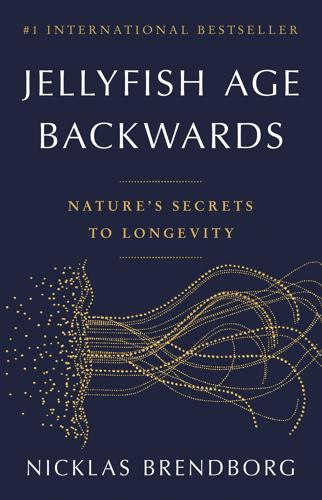
Jellyfish Age Backwards: Nature's Secrets to Longevity
by
Nicklas Brendborg
Published 17 Jan 2023
Thakkar, D., Sicova, M., Guest, N.S., Garcia-Bailo, B., El-Sohemy, A. ‘HFE Genotype and Endurance Performance in Competitive Male Athletes’, Med Sci Sports Exerc., vol. 53, no. 7, 2021, pp. 1385–1390. doi:10.1249/MSS.0000000000002595. Chapter 14: Microbe Struggles Zoltán, I. ‘Ignaz Semmelweis’, Encyclopaedia Britannica, 2020, www.britannica.com/biography/Ignaz-Semmelweis. Levy, C. ‘De nyeste Forsög i Födselsstiftelsen i Wien til Oplysning om Barselsfeberens Ætiologie’, Hospitals-Meddelelser, Tidskrift for praktisk Lægevidenskab, vol. 1, 1848. Kidd, M., Modlin, I. ‘A Century of Helicobacter pylori’, Digestion, vol. 59, 1998, pp. 1–15.
…
At his autopsy, doctors found suspicious similarities to the women with ‘childbed fever’ and then, something finally clicked for Ignaz Semmelweis. Back then, it was normal for doctors to go straight from conducting autopsies to attending deliveries: that is, from cutting open dead people to assisting women in childbirth. Semmelweis became convinced there was a connection; he reasoned doctors transferred ‘cadaverous particles’ from corpses to the expecting mothers. After some reflection, he suggested that the particles could be removed by handwashing with calcium hypochlorite (the ‘chlorine’ used today for disinfecting swimming pools). He immediately made it obligatory for all doctors at the hospital to wash their hands before getting anywhere near the women in childbirth.
…
That way, iron can be locked away in what is essentially a molecular cage so that microbes can’t get to it. Similarly, infections also make your body increase the production of a protein called hepcidin, which blocks iron uptake from your food. So perhaps it’s time we take a closer look at the world of microbes. Chapter 14 Microbe Struggles In 1847, the Hungarian-German physician Ignaz Semmelweis was trudging around Vienna with a burdened conscience. Semmelweis was an obstetrician, a doctor specialising in pregnancy and childbirth, and was in charge of the maternity ward at Vienna General Hospital. The hospital had set up two clinics to offer free maternity care to the poor women of the city.
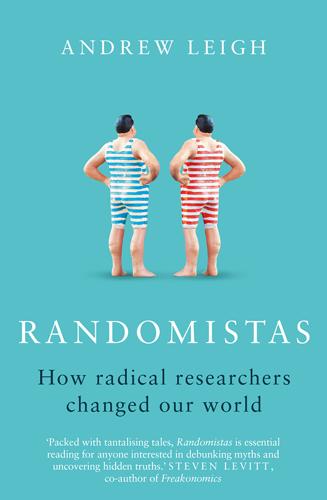
Randomistas: How Radical Researchers Changed Our World
by
Andrew Leigh
Published 14 Sep 2018
Dubner, ‘Bad Medicine, Part 1: The Story of 98.6’, Freakonomics Radio, 30 November 2016. 22For the story of Semmelweis, see Ignaz Semmelweis, Etiology, Concept and Prophylaxis of Childbed Fever, University of Wisconsin Press, 1983 [1861]; Rebecca Davis, ‘The doctor who championed hand-washing and briefly saved lives’, NPR, 12 January 2015. Mortality rates in the two clinics fluctuated significantly – the 1 in 10 and 1 in 20 figures are approximate averages for the period before handwashing was introduced. 23Carter, K. Codell & Barbara R. Carter, Childbed Fever. A Scientific Biography of Ignaz Semmelweis, Transaction Publishers, 2005. 24Quoted in John Harley Warner, The Therapeutic Perspective: Medical Practice, Knowledge, and Identity in America, 1820–1885, Princeton: Princeton University Press, 2014, p. 33. 25Wootton, Bad Medicine, p. 2. 26See for example Gregory L.
…
In the clinic run by midwives, a mother’s chance of death was less than 1 in 20. In the clinic run by doctors, maternal mortality was 1 in 10: more than twice as high. Patients knew this and would beg not to be admitted into the doctor-run clinic. Some would give birth on the street instead of in the doctors’ clinic, because their chance of survival was higher. To Ignaz Semmelweis, the doctor in charge of records, the results were puzzling. Because the two clinics admitted patients on alternate days, the health of the patients should have been similar. Indeed, it was almost as though the Vienna Hospital had set up a randomised trial to test the impact of the two clinics – and discovered the doctors were doing more harm than good.
…
Petersburg Times 60 Stark, William 16 Stewart, Matthew, and The Management Myth 138 Stigler, Stephen 50 Street Narcotics Unit experiment 92–3 streptomycin trial 56 see also Austin Bradford Hill Sullivan, Andrew, and Pyrotron 14 Suskind, Dana 70 Syed, Matthew 142 teacher payment trial 111 see also Karthik Muralidharan Telford, Dick 201–2 text messages, and use of 9, 78, 82, 123, 154 textbook trial 123–4 see also Karthik Muralidharan The Battered Women’s Movement 89 the book of Daniel 22 ‘the brevia’ and ‘the scrutiny’ 181 the ‘gold standard’ 194 The Lancet 24, 55, 120 The Matrix 30 ‘the paradox of choice’ 195 the placebo effect see placebo effect ‘the Super Bowl impossibility theorem’ 140 Thirty Million Words initiative 79–80 ‘three strikes’ law’ 99, 101 ‘Triple P’ positive parenting program 68–9 ‘True Love Waits’ program 47 Trump campaign 154 Tseng, Yi-Ping 37 see also ‘Journey to Social Inclusion’ UK Department for International Development 103 unemployment 36, 44–6, 78, 103 see also German government unemployment incentive; job training programs; ‘universal basic income’ ‘universal basic income’ 46 University of Chicago, and ‘Science of Philanthropy Initiative’ 159 University of London 54 University of Queensland, and ‘Triple P’ positive parenting program 68 University of Wollongong 187 US Agency for International Development 103, 210 US Behavioural Insights Team 186 see also Elizabeth Linos US Congressional Budget Office 194 US National Academy panel 100 US Police Foundation 89 ‘verbal bombardment’ and Perry Preschool 67 Vienna General Hospital 24–5 see also Ignaz Semmelweis Vietnam war draft 42–3 Virgin Atlantic Airways 136 ‘virginity pledges’ in the US 46–7 Wagner, Dan 159 Waiting for Superman 79 Washington Post 7 Washington Times 60 Weikart, David 66–7, 71 West Heidelberg centre 71 What Works Clearinghouse 76–7, 208 Western Union 130 Wilson, James 184–5 Wootton, David 26, 203–4 and Bad Medicine 26 World Bank 103, 111 World Health Organization 112–13, 115, 199 World Medical Association 186 Wydick, Bruce 114–15 Yale University, and Innovations for Poverty Action 123 YouWiN!
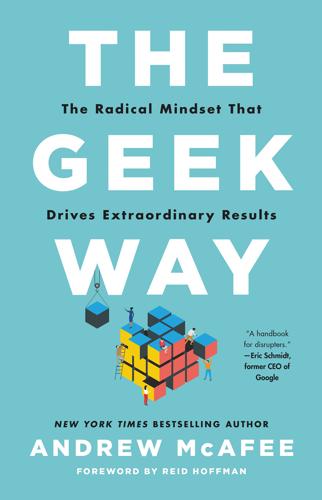
The Geek Way: The Radical Mindset That Drives Extraordinary Results
by
Andrew McAfee
Published 14 Nov 2023
Over the last quarter of the nineteenth century medical practitioners in Europe turned away from the idea of miasmas, took up the germ theory of disease, and worked hard to avoid accidentally exposing patients to these microorganisms. As the germ theory and its practical implications spread around the world, the spread of disease slowed. (Can you imagine what would happen today to an obstetrician who refused to wash their hands before assisting in a delivery?) Those of us who want better companies are better off than poor Ignaz Semmelweis, because the equivalents of Pasteur’s demonstrations have recently taken place. As we’ll see, many puzzles have been resolved around the important topic of how we humans create our cultures. We understand ourselves better now, which means that we’re less likely to keep making the mistakes of the past.
…
Things that don’t make sense with our existing theories, on the other hand, are easy to reject. Far too easy sometimes, as the tragic story of a nineteenth-century doctor who was just a little ahead of his time makes clear. I want to tell his story as we begin our explanation of the geek way because it highlights the critical importance of not only being right, but also being able to convincingly explain why you’re right. The difference between the two states can be the difference between changing the world and losing your mind. The Germ of an Idea In 1846 Ignaz Semmelweis, who was working as what we’d now call a chief medical resident at Vienna General Hospital, noticed that one of its two birth clinics was much more deadly than the other.
…
,” KM School, accessed February 13, 2023, www.kmschool.org/edu-faq/what-do-researchers-at-harvard-think-about-montessori/. 23 “Education should aim at destroying free will”: “Johann Gottlieb Fichte,” Wikiquote, Wikimedia Foundation, accessed February 13, 2023, https://en.wikiquote.org/wiki/Talk:Johann_Gottlieb_Fichte#:~:text=20.,their%20schoolmasters%20would%20have%20wished. 24 “The great majority of business scholars”: Gad Saad, Evolutionary Psychology in the Business Sciences (Heidelberg: Springer, 2011), https://epdf.pub/queue/evolutionary-psychology-in-the-business-sciences.html. 25 “except in the light of evolution”: Theodosius Dobzhansky, “Nothing in Biology Makes Sense Except in the Light of Evolution,” American Biology Teacher, vol. 35, no. 3 (1973), 125–29, https://doi.org/10.2307/4444260. 26 “Evolution didn’t stop at the neck”: Ashutosh Jogalekar, “Why Prejudice Alone Doesn’t Explain the Gender Gap in Science,” Scientific American, April 22, 2014, https://blogs.scientificamerican.com/the-curious-wavefunction/why-prejudice-alone-doesnt-explain-the-gender-gap-in-science/. 27 Daniel Dennett wrote: Daniel Dennett, Darwin’s Dangerous Idea (New York: Simon & Schuster, 1995), 21. 28 sound even better than a Stradivarius: Claudia Fritz, Joseph Curtin, Jacques Poitevineau, and Fan-Chia Tao, “Listener Evaluations of New and Old Italian Violins,” Proceedings of the National Academy of Sciences, vol. 114, no. 21 (2017), 5395–5400, https://doi.org/10.1073/pnas.1619443114. 29 “voracious consumers of theory”: Dina Gerdeman and Clayton M. Christensen, “What Job Would Consumers Want to Hire a Product to Do? Other,” Working Knowledge, accessed February 13, 2023, https://hbswk.hbs.edu/item/clay-christensen-the-theory-of-jobs-to-be-done. 30 childbed fever: Ignaz Semmelweis, Etiology, Concept, and Prophylaxis of Childbed Fever, trans. K. Codell Carter (Madison: University of Wisconsin Press, 1983), 142–43. 31 Word got around: Semmelweis, Etiology, 69. 32 “life seemed worthless”: Manya Magnus, Essential Readings in Infectious Disease Epidemiology (Sudbury, MA: Jones and Bartlett, 2009), www.google.com/books/edition/Essential_Readings_in_Infectious_Disease/gxub4qxc9j4C?

The Patient Will See You Now: The Future of Medicine Is in Your Hands
by
Eric Topol
Published 6 Jan 2015
—RICHARD SMITH, EDITOR, British Medical Journal2 “We can only see a short distance ahead, but we can see plenty there that needs to be done.” —ALAN TURING3 Profound change has not ever gone over well in the medical community. When Dr. Ignaz Semmelweis published findings in 1848 that hand washing could markedly reduce mortality, it was summarily dismissed by doctors who were offended at the suggestion they should wash their hands and saw no scientific explanation for the claim.4 Likewise, in 1990, there was strong opposition to the use of ultrasound during pregnancy. In the American Journal of Obstetrics & Gynecology (the leading medical journal of the specialty), in response to an article touting its use, Ewigman and colleagues wrote: “These authors’ ethical argument that patient autonomy justifies offering ultrasonography routinely would lead to unrealistic expectations of physicians and the health care system, cause an inappropriate legal liability, and may be harmful to patients.”5 Even the stethoscope, invented by Rene Laennec in 1816, was not received well by doctors, to put it mildly.
…
Smith, “Teaching Medical Students Online Consultation with Patients,” BMJ Blogs, February 14, 2014, http://blogs.bmj.com/bmj/2014/02/14/richard-smith-teaching-medical-students-online-consultation-with-patients/. 3. “Alan Turing,” Wikiquote, accessed August 13, 2014, http://en.wikiquote.org/wiki/Alan_Turing. 4. “Ignaz Semmelweis,” Wikipedia, accessed August 13, 2014, http://en.wikipedia.org/wiki/Ignaz_Semmelweis. 5. B. Ewigman et al., “Ethics and Routine Ultrasonography in Pregnancy,” American Journal of Obstetrics & Gynecology 163, no. 1 (1990): 256–257. 6. S. J. Reiser, Technological Medicine: The Changing World of Doctors and Patients (New York, NY: Cambridge University Press, 2009), 12. 7.
…
Brennan-Taylor lost her mother and has become a national advocate for hospital safety. Her lessons of overriding medical paternalism, and the need to inspire patients to assert themselves are well stated: “I felt responsible for not being able to protect her. I was totally trusting. I never asked the doctors and nurses coming into her room to wash their hands. I never checked her medication.” In an article entitled “Survive Your Hospital Stay,” Consumer Reports rated 2,591 hospitals for safety, with quite striking findings.17 The differences in death rates for common diagnoses or surgery were analyzed as a function of low or high rating. The ratings factored in mortality, readmission to the hospital within thirty days from being discharged, infections, communications of the staff, and the use of medical scans.
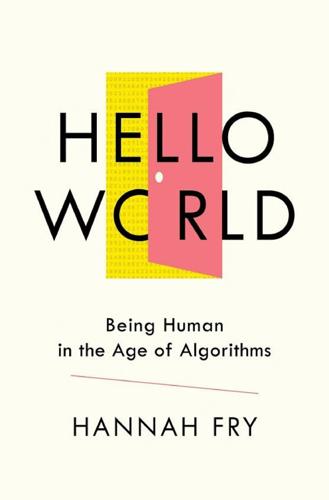
Hello World: Being Human in the Age of Algorithms
by
Hannah Fry
Published 17 Sep 2018
All they had to do was find an individual with a mild case of the disease, harvest their scabs, dry them, crush them and blow them into the nose of a healthy person.6 Or the medical golden age of the nineteenth century, as medicine adopted increasingly scientific methods, and looking for patterns in data became integral to the role of a physician. One of these physicians was the Hungarian Ignaz Semmelweis, who in the 1840s noticed something startling in the data on deaths on maternity wards. Women who gave birth in wards staffed by doctors were five times more likely to fall ill to sepsis than those in wards run by midwives. The data also pointed towards the reason why: doctors were dissecting dead bodies and then immediately attending to pregnant women without stopping to wash their hands.7 What was true of fifteenth-century China and nineteenth-century Europe is true today of doctors all over the world.
…
Joseph Needham, Science and Civilization in China, vol. 6, Biology and Biological Technology, part VI, Medicine, ed. Nathan Sivin (Cambridge: Cambridge University Press, 2004), p. 143, https://monoskop.org/images/1/16/Needham_Joseph_Science_and_Civilisation_in_China_Vol_6-6_Biology_and_Biological_Technology_Medicine.pdf. 7. ‘Ignaz Semmelweis’, Brought to Life: Exploring the History of Medicine (London: Science Museum n.d.), http://broughttolife.sciencemuseum.org.uk/broughttolife/people/ignazsemmelweis. 8. Quotations from Andy Beck are from personal communication. 9. Joann G. Elmore, Gary M. Longton, Patricia A. Carney, Berta M.
…
It was a ZX Spectrum, a little 8-bit computer – the first time we’d ever had one of our own. It was probably already five years out of date by the time it arrived in our house, but even though it was second-hand, I instantly thought there was something marvellous about that dinky machine. The Spectrum was roughly equivalent to a Commodore 64 (although only the really posh kids in the neighbourhood had one of those) but I always thought it was a far more beautiful beast. The sleek black plastic casing could fit in your hands, and there was something rather friendly about the grey rubber keys and rainbow stripe running diagonally across one corner. For me, the arrival of that ZX Spectrum marked the beginning of a memorable summer spent up in the loft with my elder sister, programming hangman puzzles for each other, or drawing simple shapes through code.
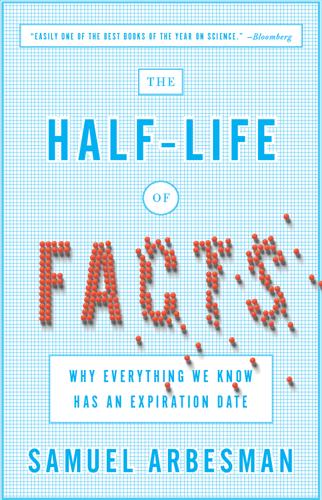
The Half-Life of Facts: Why Everything We Know Has an Expiration Date
by
Samuel Arbesman
Published 31 Aug 2012
Specifically, Semmelweis realized that those parts of the hospital that did not have their obstetricians also perform autopsies had similarly low amounts of childbed fever as home deliveries. Ignaz Semmelweis argued that the doctors—who weren’t just performing autopsies in addition to deliveries but were actually going directly from the morgue to the delivery room—were somehow spreading something from the cadavers to the women giving birth, leading to their deaths. Semmelweis made a simple suggestion: Doctors performing deliveries should wash their hands with a solution of chlorinated lime beforehand. And this worked. It lowered the cases of childbed fever to one tenth the original amount.
…
The other players are the beneficiaries of a certain amount of self-serving bias—praise for success, without the burden of failure—at least that’s how the media portray it, even if they are not subject to this cognitive bias themselves. There are well over a hundred of these biases that have been cataloged. . . . IN the 1840s, Ignaz Semmelweis was a noted physician with a keen eye. While he was a young obstetrician working in the hospitals of Vienna, he noticed a curious difference between mothers who delivered in his division of the hospital and those who delivered at home, or using midwives in the other part of the hospital. Those whose babies were delivered by the physicians at the hospital had a much higher incidence of a disease known as childbed fever, which often causes a woman to die shortly after childbirth, than the women delivering with midwives.
…
Programmed cell death is not nearly as scary as it sounds. Our bodies often require the death of individual cells in order to perform correctly, and there is a set of genes in our cells tailored for this purpose. For example, during embryonic development, our hands initially have webbing between the fingers. But prior to birth the cells in the webbing are given the signal to die, causing us to not have webbed hands. Webbed hands and feet only occur when the signal is given incorrectly, or when these genes don’t work properly. What CoPub Discovery computationally hypothesized is that when these programmed cell death genes don’t work properly in other ways, a cascade of effects might follow, eventually leading to the condition known as Graves’ disease.
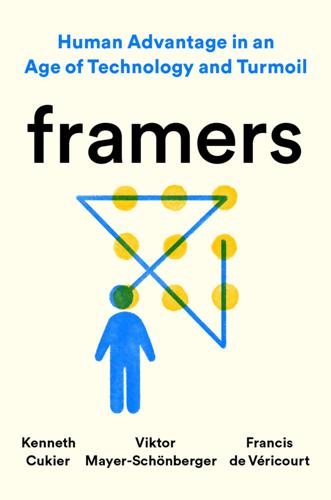
Framers: Human Advantage in an Age of Technology and Turmoil
by
Kenneth Cukier
,
Viktor Mayer-Schönberger
and
Francis de Véricourt
Published 10 May 2021
Two years later, based on Pasteur’s frame, he wrote a long series of articles in the medical journal The Lancet on the success of sterilizations and instructed all surgeons to wash their hands. Lister, as a member of the establishment and offering detailed explanations in the scientific literature, succeeded where Semmelweis hadn’t. Today, he is considered the “father of modern surgery,” and his name is immortalized on the sterilizing mouthwash brand Listerine. The tragic case of Ignaz Semmelweis highlights that it is not sufficient for a mental frame to improve decision-making. For a frame to catch on, it also has to offer a convincing causal explanation.
…
The Need for Explainability The biggest benefit of seeing the world through abstract causal templates is that it makes the world explainable—though we may not always be able to find the right explanation. At the Vienna General Hospital in Austria in the 1840s, a young obstetrician named Ignaz Semmelweis noticed a strange difference in childbirths. Women in the maternity ward whose babies were delivered by doctors died of puerperal fever at five times the rate of women whose births were handled by midwives. Pregnant women knew about these differences too. They would literally beg hospital staff to be assigned a midwife rather than a doctor, even though the doctors were supposed to be more learned and professional.
…
The story of Semmelweis: Sherwin Nuland, The Doctors’ Plague: Germs, Childbed Fever, and the Strange Story of Ignác Semmelweis (New York: Norton, 2004). Also see: Rebecca Davis, “The Doctor Who Championed Hand-Washing and Briefly Saved Lives,” NPR Morning Edition, January 12, 2015, transcript and audio, https://www.npr.org/sections/health-shots/2015/01/12/375663920 the-doctor-who-championed-hand-washing-and-saved-women-s-lives?t=1577014322310. On Louis Pasteur: Louise E. Robbins, Louis Pasteur and the Hidden World of Microbes (New York: Oxford University Press, 2001). On Joseph Lister: Lindsey Fitzharris, The Butchering Art: Joseph Lister’s Quest to Transform the Grisly World of Victorian Medicine (New York: Farrar, Straus and Giroux, 2017).
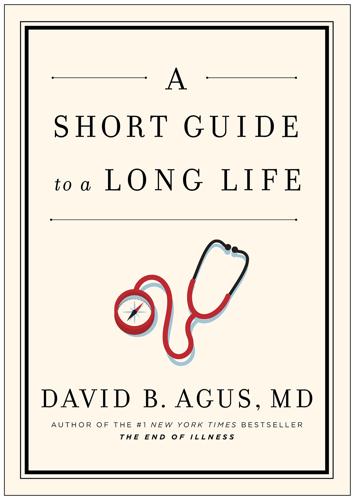
A Short Guide to a Long Life
by
David B. Agus
Published 7 Jan 2014
It’s hard to believe that the dramatic decrease in infectious diseases between the discovery of germs and antidotes such as antibiotics and vaccines was actually not the result of high-tech medical treatments, but rather of changes in how we practice good hygiene. Although technically not a discovery on par with penicillin and the smallpox or polio vaccines, the mid-nineteenth-century recognition of the importance of hand washing was a huge medical breakthrough that saved a lot of people long before vaccines and antibiotics were widely available. In 1847, while working at an obstetrics clinic in Vienna, Hungarian-born physician Dr. Ignaz Semmelweis noticed that fatal fevers among mothers of newborn children happened more frequently in birthings assisted by medical students than in those assisted by midwives. This prompted him to look closer at the clinic’s practices, and he soon noted that the medical students who aided in childbirth often did so after performing autopsies on people who had died from bacterial sepsis—a whole-body blood infection in which the inflammatory response to a blooming bacteria turns deadly.
…
Severe or persistent vomiting or diarrhea 9. Coughing or vomiting blood 10. Suicidal or homicidal feelings Top 10 Things to Do During Cold Season 1. Get your flu shot if you haven’t already. 2. Wash your hands routinely. 3. Avoid sharing food and drinks with others. 4. Stay away from sick people. 5. Don’t go to work (and avoid public places) if you’re feeling ill. 6. Keep zinc lozenges on hand. 7. Avoid touching your face and eating with your hands. 8. Carry hand sanitizer. 9. Avoid stuffy rooms that have poor ventilation. 10. Keep common surface areas clean. Top 10 Reasons to Take a Walk 1. You’ll prevent weight gain and perhaps walk off weight. 2.
…
He then established a strict policy of hand washing with a chlorinated antiseptic solution, and lo and behold, mortality rates dropped ten- to twentyfold within three months. It was proof that the transfer of disease could be significantly reduced by this simple hygienic practice, even though doctors at the time didn’t know the exact causes of such diseases in many cases. Had civilization figured this out sooner, perhaps we could have avoided many of the deaths associated with plagues and epidemics that wiped out millions of people in earlier centuries. Even today, we are inclined to trivialize the simple act of hand washing and would do well to keep it at the top of our priorities on a daily basis.
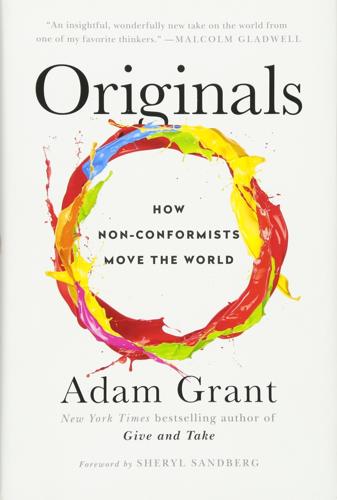
Originals: How Non-Conformists Move the World
by
Adam Grant
Published 2 Feb 2016
“In that intervening period, it became obvious to even people who were real Luddites that we had to do things differently; the times called for it. It became difficult for anyone who had half a brain in their head not to listen to her, and agree that that was the direction in which to move.” In the 1840s, when Hungarian physician Ignaz Semmelweis discovered that having medical students wash their hands dramatically reduced death rates during childbirth, he was scorned by his colleagues and ended up in an asylum. It would be two decades before his ideas gained scientific legitimacy as Louis Pasteur and Robert Koch laid the foundations of germ theory. As physicist Max Planck once observed, “A new scientific truth does not triumph by convincing its opponents and making them see the light, but rather because its opponents eventually die.”
…
pioneers had lower survival rates: Stanislav D. Dobrev and Aleksios Gotsopoulos, “Legitimacy Vacuum, Structural Imprinting, and the First Mover Disadvantage,” Academy of Management Journal 53 (2010): 1153–74. “We had to wait for Amazon”: Personal interview with Neil Blumenthal, June 25, 2014. Hungarian physician Ignaz Semmelweis: Steven D. Levitt and Stephen J. Dubner, SuperFreakonomics: Global Cooling, Patriotic Prostitutes, and Why Suicide Bombers Should Buy Life Insurance (New York: William Morrow, 2009). “A new scientific truth”: Max Planck, Scientific Autobiography and Other Papers (New York: Philosophical Library, 1949).
…
In hospitals, to encourage doctors and nurses to wash their hands more often, my colleague David Hofmann and I posted two different signs near soap and gel dispensers: Over the next two weeks, a member of each hospital unit covertly counted the number of times that medical professionals washed their hands before and after each patient contact, while an independent team measured the amount of soap and gel used from each dispenser. The sign on the left had no effect whatsoever. The sign on the right made a significant difference: merely mentioning patients instead of you led medical professionals to wash their hands 10 percent more often and use 45 percent more soap and gel.
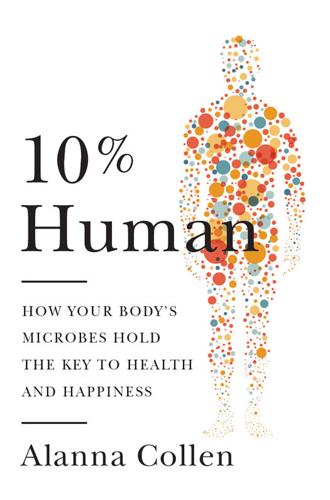
10% Human: How Your Body's Microbes Hold the Key to Health and Happiness
by
Alanna Collen
Published 4 May 2015
In comparison with giving birth, often at home, in large areas of Africa, Asia and South America, giving birth in much of Europe, North America and Australasia is a highly medicalised, sterile process. Beds, hands and tools are all washed with antibacterial soaps and alcohol rubs before they come into contact with the labouring woman or her baby. Nearly half of American women are put on an anti biotic drip to prevent them from passing on harmful bacteria such as Group B strep to their babies. And all American babies receive a dose of antibiotics straight after they are born, just in case their mothers have gonorrhoea, which could, in rare cases, cause an eye infection. Ignaz Semmelweis would be pleased to see his antiseptic measures so thoroughly and effectively put into practice, and there’s no doubt that many thousands of mothers and babies are alive because of such hygiene.
…
By the 1840s, up to 32 per cent of women giving birth in hospital would subsequently die. Doctors – all male at that time – blamed their deaths on anything from emotional trauma to uncleanliness of the bowel. The true cause of this horrifyingly high death rate would at last be unravelled by a young Hungarian obstetrician by the name of Ignaz Semmelweis. At the hospital where Semmelweis worked, the Vienna General, women in labour were admitted on alternate days into two different clinics. One was run by doctors, and the other by midwives. Every second day, as Semmelweis walked to work, he’d see women giving birth on the street outside the hospital doors.
…
Routines are also messed with – turning the lights on, locking the doors, washing the hands. For those OCD sufferers who compulsively wash their hands, there’s an intriguing possibility. I mentioned earlier that some groups of bacteria become more abundant just after hand-washing, perhaps because they take the opportunity to bloom in the absence of their more vulnerable peers. I’ll save you the trouble of looking back: the streptococci are one such group. It’s by no means certain, but maybe these opportunistic pathogens gain enough ground on the hands and in the gut after a good hand-wash to persuade their host, via the habit-enforcing, reward-giving basal ganglia, to keep on washing.

Radical Uncertainty: Decision-Making for an Unknowable Future
by
Mervyn King
and
John Kay
Published 5 Mar 2020
The English doctor Thomas Watson in 1842 recommended that doctors wash their hands in a chlorine solution to prevent the transmission of infection from one case to another. And in 1843 Oliver Wendell Holmes Sr (father of the great jurist whom we met in chapter 11 ) published a paper in the New England Quarterly Journal of Medicine entitled ‘On the Contagiousness of Puerperal Fever’ also arguing that the cause of so many fatalities was the spread of germs by doctors. Perhaps the most systematic study of the causes and prevention of puerperal fever was made by the Viennese physician Ignaz Semmelweis. In 1847, he discovered that the incidence of the infection was much lower for women giving birth at home than in hospital and that it was greatly reduced if doctors had washed their hands in chlorinated water.
…
And it is that interpretation – risk as failure to fulfil the central elements of the reference narrative – which we will continue to use, in this book and in our everyday lives. In earlier chapters we described some risk lovers who have changed society – Richard Branson, Winston Churchill, Steve Jobs, Elon Musk, George Orwell. Ignaz Semmelweis, whose dogmatic conviction of his own rightness drove him to insanity but helped save the lives of millions of women. Barry Marshall, who changed medical practice and won a Nobel Prize by infecting himself with bacteria. None of this behaviour has anything to do with the utility of wealth functions of these individuals.
…
Building on the success of probabilistic reasoning in illuminating games of chance, the approach of decision theory bifurcates uncertainty into the unknown and unknowable, and the unknown but capable of being characterised by a known probability distribution. The practitioners of this approach wash their hands of the former, describing the unknown and unknowable as ‘shifts’ and ‘shocks’, as unpredictable and inexplicable as the Yucatán asteroid. Other uncertainties are treated as resolvable. There is no room for radical uncertainty. But people routinely need to make decisions with imperfect information.
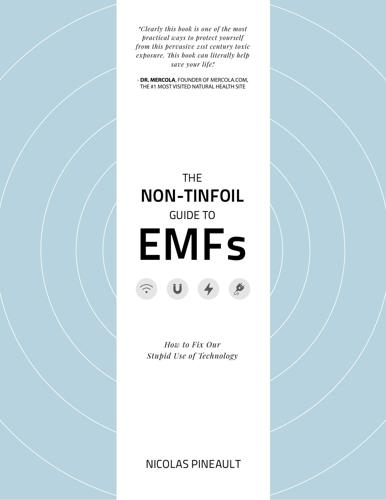
The Non-Tinfoil Guide to EMFs
by
Nicolas Pineault
Published 6 Dec 2017
Still killing 1.5-2M people a year from lung cancer alone326 And if you thought I just ruined your day with all this doom and gloom stuff, I’m sorry I have to share one more example I read in Elizabeth Plourde’s amazing book that shows how human nature tends to screw things up:327 “[In the 1840s], Dr. Ignaz Semmelweis identified that doctors going from autopsy to assisting in childbirth were responsible for the 20% of the women who were continually dying from childbed fever (puerperal infection). He arranged an experiment of washing hands between autopsy and assisting with childbirths. That simple act reduced the outrageously high number of mothers dying down to only 1%. But, because the bacteria could not be seen, doctors refused to believe they were infecting their patients and kept on killing 20% of our women for an additional 30 years before washing of hands was adopted as an essential, common sense answer that is necessary to save lives.”
…
More details at electricsense.com/ en.wikipedia.org © 2017 N&G Media Inc. 72 EMFs & Your Nervous System Martin Blank, PhD, reports that a series of 3 papers published between 2001 and 2006219 clearly demonstrated a direct link between cellphone use and the human nervous system: “The results indicated [EMF] exposure on the left side of the brain slows down the left-hand reaction time and that the same is true for right-hand reactions after exposure on the right side of the brain.” A 2014 review by Redmayne and Johansson220 confirmed this link and showed that EMFs can damage myelin sheaths — the protective fatty layer which protects your nerves — throughout your body. This might explain why some electro-hypersensitive people claim they are being affected on a very physical level by EMFs.
…
Overpowered: The Dangers of Electromagnetic Radiation (EMF) and What You Can Do about It. Seven Stories Press. © 2017 N&G Media Inc. 91 6) Should you have the legal right to tell your neighbor to turn off his wifi router at night, if it makes you unable to sleep? Should second-hand EMFs be treated like second-hand smoke? After all, just a few decades ago it was totally fine to smoke on airplanes, even if it made everyone basically cough black tar after their flight.305 In 1973, they even made “non-smoking” zones mandatory in airplanes.306 7) How can we properly study our EMF’ed population when virtually no one is un-exposed, AKA there’s no proper “control group”?

Progress: Ten Reasons to Look Forward to the Future
by
Johan Norberg
Published 31 Aug 2016
It seemed impossible that microorganisms, things that were too small to see, could be a cause of disease and death. But natural experiments began to change the prevailing view. In the mid-nineteenth century, the Hungarian obstetrician Ignaz Semmelweis famously noticed a high incidence of puerperal fever among pregnant women who delivered with the help of physicians, whereas it was much lower among those helped by midwives. He connected this with the fact that the physicians had often come straight from autopsies, and made them wash their hands with chlorinated lime water, which reduced maternal deaths by almost ninety per cent. New microscopes had made it possible to see microorganisms.
…
Two water pipes have been constructed, so Kiberans do not have to rely entirely on the unsafe water from the dam and from the rain. Several modern sanitation blocs have been built by entrepreneurs and non-governmental organizations (NGOs), where Kiberans can go to a clean toilet and get a hot shower at a low cost, and hand-washing facilities have been introduced in several schools. Cases of typhoid, dysentery and hookworm infestations are on the decline, and at last, so is child and infant mortality. Sub-Saharan Africa achieved a twenty-percentage-point increase in the use of improved sources of drinking water from 1990 to 2015.
…
The knowledge about germs in itself also made people change behaviour. Until the theory was established, hotels did not change bed linens between guests, doctors used instruments that weren’t sterilized, and water was not always boiled to kill bacteria. It took time before health personnel were convinced to wash their hands and sterilize equipment, but when it happened it had an amazing effect on maternal death. In countries that hold data, such as Sweden and Finland, around 1,000 mothers died per 100,000 child births in 1800. Those are shocking numbers: the mother died in every hundredth childbirth. Since mothers gave birth much more often than today, this would have been a regular occurrence in a family.
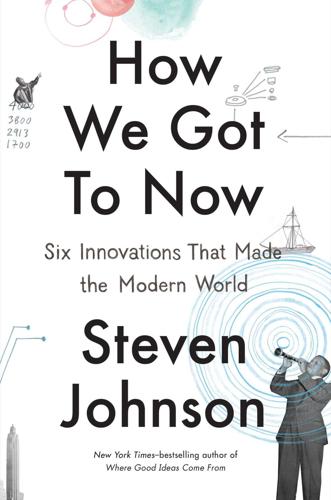
How We Got to Now: Six Innovations That Made the Modern World
by
Steven Johnson
Published 28 Sep 2014
We needed both a germ theory of disease—and a way to keep those germs from harming us. — WHEN YOU GO BACK to look at the initial reaction from the medical community to the germ theory, the response seems beyond comical; it simply doesn’t compute. It is a well-known story that the Hungarian physician Ignaz Semmelweis was roundly mocked and criticized by the medical establishment when he first proposed, in 1847, that doctors and surgeons wash their hands before attending to their patients. (It took almost half a century for basic antiseptic behaviors to take hold among the medical community, well after Semmelweis himself lost his job and died in an insane asylum.) Less commonly known is that Semmelweis based his initial argument on studies of puerperal (or “childbed”) fever, where new mothers died shortly after childbirth.
…
Clearly some kind of infectious agent was being transmitted from the corpses to the new mothers; with a simple application of a disinfectant such as chlorinated lime, the cycle of infection could be stopped in its tracks. There may be no more startling example of how much things have changed in our understanding of cleanliness over the past century and a half: Semmelweis was derided and dismissed not just for daring to propose that doctors wash their hands; he was derided and dismissed for proposing that doctors wash their hands if they wanted to deliver babies and dissect corpses in the same afternoon. This is one of those places where our basic sensibilities deviate from the sensibilities of our nineteenth-century ancestors. They look and act like modern people in many ways: they take trains and schedule meetings and eat in restaurants.
…
Harriet Beecher Stowe and her sister Catharine Beecher advocated a daily wash in their influential handbook, The American Woman’s Home, published in 1869. Reformers began building public baths and showers in urban slums around the country. “By the last decades of the century,” the historian Katherine Ashenburg writes, “cleanliness had become firmly linked not only to godliness but also to the American way.” Poster issued by the Central Council for Health Education (1927–1969), 1955 The virtues of washing oneself were not self-evident, the way we think of them today. They had to be discovered and promoted, largely through the vehicles of social reform and word of mouth.
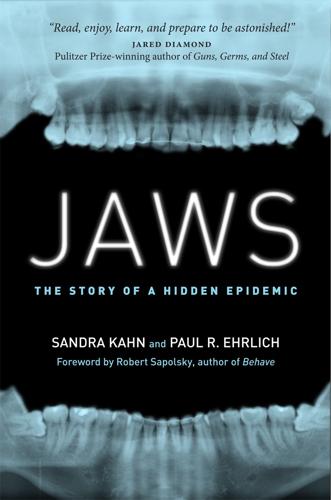
Jaws
by
Sandra Kahn,Paul R. Ehrlich
Published 15 Jan 2018
Additionally, professionals in every field, not just health, tend to be very conservative, even sometimes in the face of massive contrary evidence. Even the best of practitioners have sometimes been slow to adopt lifesaving procedures. A classic case was that of Ignaz Semmelweis and childbed fever. Semmelweis was a Hungarian physician who showed in the 1840s that the dangerous fever, which killed about 10 percent (in some cases, up to 30 percent) of women in maternity wards, could be nearly eliminated by careful hand washing by physicians. Doctors largely refused to believe his empirical evidence because it conflicted with then-current theories of contagion, which did not yet include Louis Pasteur’s germ theory.
…
Increasing ventilation can also help, and one or another of various air cleaning devices could be considered, especially during the first years of a child’s life, although their effects are debatable.20 One place where very young children easily acquired stuffy noses is in day care centers. Colds can be passed around by caregivers, who help youngsters wipe and blow their noses but sometimes do not practice good sanitation. Simple training in hand washing has been shown to significantly reduce colds among the children under 2 years old,21 an important time for jaw development. Many parents complain that because their kids have allergies, they can’t breathe through their nose. But consider the possibility that in some cases mouth breathing, taking many more particles into the lungs than would occur through nose breathing, may actually be the root of the problem.
…
Pay attention to toughness of foods, and encourage thorough chewing Help them practice hard chewing with a tough chewing gum. Avoid most commercial “baby foods.” Check children’s sleep habits, looking for mouth breathing and signs of disturbed slumber. Treat any signs of a stuffy nose or snoring promptly. If congestion persists, think allergies. Encourage steps like thorough hand-washing to limit nose-cold transmission. Check child care facilities for sanitary procedures. Pay attention to a baby’s posture, especially when it is being transported. Limit slouching and head-forward postures over computers, phones, and the like. Try GOPex or Buteyko training, according to perceived need.

Liquid: The Delightful and Dangerous Substances That Flow Through Our Lives
by
Mark Miodownik
Published 5 Sep 2018
In the nineteenth century, it was still normal practice for doctors to travel from bedside to bedside without changing their clothes or washing their hands after examining women during childbirth. This practice caused incredibly high rates of maternal and infant mortality during childbirth. In 1847 a Hungarian obstetrician, Ignaz Semmelweis, mandated that physicians scrub their hands with a chlorinated lime solution before touching patients, and saw the death rate fall from 20 per cent to 1 per cent. Despite this evidence, doctors were still reluctant to accept that they might be carrying infections on their hands, and transferring them to their patients, thus causing an enormous number of deaths.
…
There were similarly high rates across Europe and the United States, leading to a sharp increase in hospital mortality. By 2006, the UK had seen 2,000 deaths due to MRSA and hospitals were struggling to deal with spread of the bacterium. Fortunately, thanks to stricter hand-washing regimes – in particular, requiring nurses and doctors to wash their hands after contact with patients – the rate of death has gone down in the past decade. Outside the hospital, though, a public-health campaign began, extolling the benefits of clean hands, and it hinged on the promotion of antibacterial soaps, which, along with sodium lauryl sulphate and its cousin molecules, contain agents like triclosan, an antimicrobial molecule.
…
The sucking and roaring goes on a little too long, as if to say: ‘Yeah, who you looking at? I could suck you down this little hole too.’ I turned to the basin to wash my hands and was confronted by two bottles with pump-action dispensers. I went for the one that looked most like soap and gave the bottle a couple of pumps, and it squirted a clear, yellow liquid into my hand. I’ve never really liked liquid soap; I object to the squirting action. It always reminds me of a small pet that pees with fright into your hand the moment you pick it up. When I was growing up, liquid soap hadn’t been invented. We just had bars of soap. These were so ubiquitous that basins were manufactured with indentations specifically designed to hold the soap so it wouldn’t slip on to the floor or into the sink bowl.
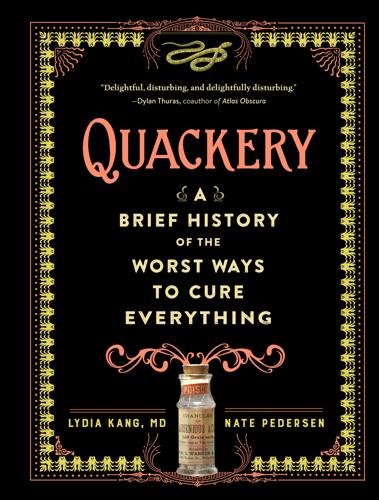
Quackery: A Brief History of the Worst Ways to Cure Everything
by
Lydia Kang
and
Nate Pedersen
Published 16 Oct 2017
Medical students at the Vienna General Hospital in 1840 would bring their unwashed hands directly from autopsies to the obstetrics ward, killing one out of three mothers from childbed fever. In contrast, the ward manned by midwifery pupils had a 3 percent mortality rate. When the students switched wards, the horrible death rates followed the medical students and their bacteria-laden hands. The physician Ignaz Semmelweis, observing this, had the staff do something simple but miraculous: wash their hands with soap and a chlorine solution. Voilà—death rates plummeted. But tragically, no one listened. In the nineteenth century, Joseph Lister built upon microbiologist Louis Pasteur’s germ theory of disease and eventually revolutionized surgery by introducing the concept of antisepsis.
…
Just as colorful a range of ailments—tuberculosis, dropsy, hernias, appendicitis, depression, poor nutrition, headaches (Mozart’s father once famously said—“the arse cures the head”), obesity, sluggishness, breathing problems, fever-borne illnesses, sexual dysfunction, drowning, and coughing up blood. Somewhere in that rear cave of the ailment-addled human was a dark place that promised health, if it was simply power-washed with a deft hand. Spanish vase, c. 1600s. The inscription states, “I am Don Joaquin Hernandez’s jar. Through intense devotion to my constitution I find myself on this occasion shamefully syringed at the hands of a serf.” The delivery system started out as more rudimentary, with hollowed gourds, tube-shaped bones, or animal bladders. Thoughtfully, some people were employed as “blowers” to give the medicated liquids a little oral push to their dark destinations.
…
Rectal cleanliness could fix it all, for if filth was the root cause of disease (true, in many cases), then internal colonic cleanliness could prevent it. One little problem, though—the ptomaine theory was wrong. Bacteria and their toxins, not ptomaines, actually cause food poisoning, so the theory fell out of use. Washing hands? A great way to prevent infections. Washing colons? Not so much. In addition to autointoxication was the pervasive humoral theory. For multiple centuries, “clyster, bleed, purge” was the treatment for everything, particularly if the black bile/melancholic humor was out of sorts. Methods of cure that made bile flow out the anus ruled.
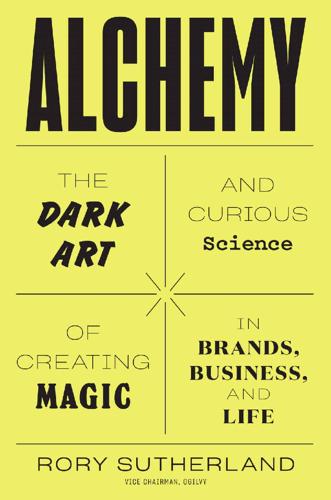
Alchemy: The Dark Art and Curious Science of Creating Magic in Brands, Business, and Life
by
Rory Sutherland
Published 6 May 2019
This might seem strange, but for years after the bicycle shop owners from Ohio had flown their manned heavier-than-air device on North Carolina’s Outer Banks, the US Government refused to acknowledge their achievement, maintaining that a government-sponsored programme had actually been first.* In 1847, when Ignaz Semmelweis decisively proved that hand-washing by doctors would cut the incidence of puerperal fever, a condition that could be fatal during childbirth, he was spurned. All too often, what matters is not whether an idea is true or effective, but whether it fits with the preconceptions of a dominant cabal.* I had always innocently assumed that after Edward Jenner discovered a vaccination against smallpox he would have presented his findings before sitting back to enjoy the acclaim.
…
A series of simple amendments could delay a letter or memo by a week, but the ownership and use of a typewriter was a signal that you were a serious business – any provincial solicitor who persisted in writing letters by hand became a tailless peacock. Take note that I have committed the same offence that everyone else does when writing about sexual selection: I have confined my examples to those occasions where it runs out of control and leads to costly inefficiencies, such as typewriters, Ferraris and peacocks tails.* This is unfair. In the early stages of any significant innovation, there may be an awkward stage where the new product is no better than what it is seeking to replace. For instance, early cars were in most respect worse than horses. Early aircraft were insanely dangerous. Early washing machines were unreliable.
…
Or alternatively, be explicit about a product’s weakness.* Deploy the ‘Goldilocks effect’ – the natural human bias that means that, when presented with three options, we are most likely to choose the one in the middle. Washing detergent manufacturers use language that normalises the lower and middle usage of the product, while implicitly stigmatising overdosing. For example, ‘Half a capful for light–normal wash’; ‘One capful for a full or heavy wash’; ‘Two capfuls for extreme soiling.’ This creates the impression that one would only use more than one capful if they had committed some brutal crime: as a result, even overdosers will likely use only one cap.* Change the format: it is hard to believe that a lower amount of powder or liquid will do the same job as before, but if the formulation is changed to a gel or tablets we are more likely to believe it.
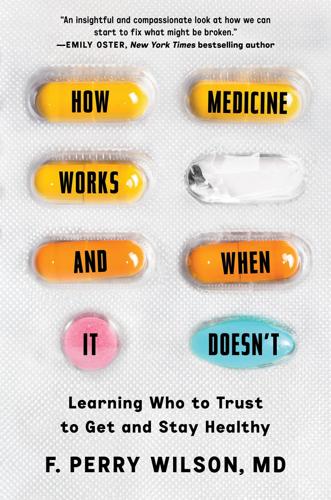
How Medicine Works and When It Doesn't: Learning Who to Trust to Get and Stay Healthy
by
F. Perry Wilson
Published 24 Jan 2023
The bright, shiny promise of the quick fix can lead people away from the real fix. We need to recognize the hype and beware of easy promises. I should note, though, that the history of Medicine is littered with breakthroughs that might sound like quick fixes. Think of Ignaz Semmelweis convincing obstetricians to wash their hands—a practice that cut maternal mortality in half. Or think of the discovery that ether could put patients into a sleeplike state where they didn’t feel pain, transforming surgery from distilled barbarism to the elegant art form it is today. Think of Alexander Fleming and penicillin, or Jonas Salk and the polio vaccine.
…
It is the oldest form of compassion, the oldest form of empathy. The scientific method changed Medicine forever, making it more powerful, more perfect, and more valuable. But the gesture of a doctor placing a hand on the hand of a patient is the same now as it was fifty, five hundred, and five thousand years ago. It is no less powerful and no less sublime now than it was then. Hand in hand, we can fulfill the promise of Medicine, and maybe heal more than one another. Acknowledgments NONE OF THIS—this book, my job, modern medical science—would be possible without the individuals who volunteer to participate in medical studies.
…
Medical school introduces young people to the concept of mortality through the anatomy lab—where teams of five students are assigned a preserved cadaver, which they slowly dissect over the course of six months. It can be a traumatic experience; one of my classmates fainted as soon as the shroud was lifted from her cadaver. Another would faint almost half a year later, when we started to dissect the hands. This was common, I was told. People faint when they see the cadaver’s face and when they see its hands, two parts that remind us that the bodies are truly human. So mortality was on my mind when Garlic Man told me that, essentially, death is a choice we make by not eating enough garlic. I won’t say I was overly credulous, but I was intrigued enough to do some research.
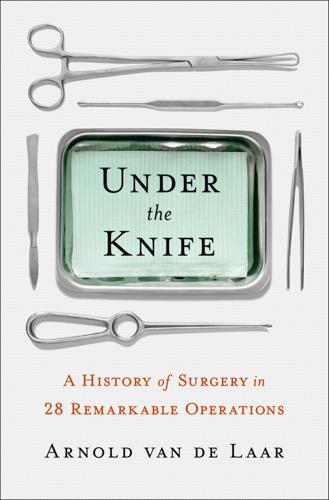
Under the Knife: A History of Surgery in 28 Remarkable Operations
by
Arnold van de Laar Laproscopic Surgeon
Published 1 Oct 2018
Cocaine has long since been replaced in local anaesthesia by derivative drugs that have the same effect locally, but without the stimulating side effects. Anaesthesia was a revolution in surgery; the next step was the introduction of hygiene. In 1847, the Hungarian Ignaz Semmelweis discovered that childbed fever – an infection contracted by mothers shortly after childbirth – occurred when medical students returning from the dissecting-room after practising anatomy on dead bodies did not wash their hands before assisting with births. No one believed, however, that something as simple as washing your hands could make the difference between life and death and Semmelweis was dismissed as mad. (It did not help that he unfortunately suffered from a neurological disorder that was gradually driving him insane.)
…
Antisepsis, antiseptic The use of antiseptics (disinfectants) to remove bacteria from the skin, mucous membrane or a wound. The first disinfectants were wine and cognac. Carbolic acid was used later, but that was too harmful to bodily tissues. Today, chemicals containing iodine or chlorine are used. Simply washing with soap and water also disinfects to a certain extent, explaining why surgeons wash their hand so often. Not to be confused with asepsis/aseptic. Arteriosclerosis Inflammatory disease of the arteries. The inner wall of the artery is affected by accumulations of cholesterol, causing an inflammation. That creates scar tissue in which calcium carbonate can be deposited.
…
Easter Sunday eating disorders ec-: meaning ECG (electrocardiography) Edward VII Edward VIII EEG (electroencephalography) eels Egyptians, ancient Einstein, Albert elective surgery electric eels electricity electrocoagulation Elisabeth, Empress see Sisi, Empress embolism embryos emergence emergency treatment: ABC; primary tasks; risks emphysema end-of-life care; see also palliative care endocrinology endolymphatic shunt endoscopy enemas epidemiology epiploon see omentum epispasm Erasistratus erection E.T. (1982) ether eunuchs evidence-based evolution ex-: meaning examinations of patients excision expectative treatment; see also waiting exposure: definition extraterrestrials eyes facial prosthesis faeces containing blood Fagniez, Pierre-Louis fainting fallopian tubes falsifiability Fantastic Voyage (1966) Faraday cages Farinelli fast track post-operative care fat removal Félix de Tassy, Charles-François fever fibroblasts fiction Finney, Jack fistula: definition; Louis XIV; Pedoux, Jules; Pope Leo X; seton method Fitz, Reginald Flandrin, Georges fleam; see also bloodletting Fleischer, Richard fluctuation fluoroscopy foetal surgery folk tales food hygiene forceps foreskin fractures: ankles; early ancestors; healing; repositioning; scars; traumatology Francis, Pope Frankenstein, Viktor French Revolution Freud, Sigmund Friedrich III fruit as measurement funerals, Middle Ages Galen gall bladder: Halsted, William; laparoscopy; Pope John Paul II; Shah of Iran; surgical incisions; triad gall stones gamma rays gangrene: arteriosclerosis; cause; definition; Louis XIV; popes; process; septic shock Garibaldi, Giuseppe gas exchange gastrectomy gastric acid gastric bypass gastroenterologists gastrointestinal surgery gastrointestinal tract; see also intestines; oesophagus; stomach gastroscope gender balance in surgery General Internal Medicine (GIM) -genic: meaning George I George II George V George VI Gilbert, Scott gills Gilmore, James glasses Glenn, Frank gloves Glück, Themistocles gluttony -gnosis: meaning Go, Peter goitre Good Friday gout Graham, Evarts granulomas Gray, Tom Greek gods Greeks, ancient greenhouse gases Greenlees, James groin hernia GSV (great saphenous vein) guilds gynaecologists Habsburgs Hacker, Viktor von Hadrian haematemesis haem-: meaning haematoma haematuria: definition haematuris haemoptysis haemorrhoids Halsted, William hamburgers Hammurabi, Code of hand washing hands: anatomical snuffbox ‘happy milk’ Harrison, Michael Hartmann, Henri Harvey, Thomas Harvey, William healing: compared to curing; definition; see also wound healing health care policy heart: blood pressure; cardiac tamponade; cardiogenic shock; ECG; fibrillation; function; pacemakers; transplants; valve replacement; whales; see also cardiac surgery heart attack heart transplants heartburn Heliogabalus Heller, Thérèse hemi-: meaning Henchcliffe, Margaret hepatitis hepatosplenomegaly Heraclitus hernia: definition; diaphragmatic; etymology; evolutionary cause; femoral; groin; keyhole surgery; placebo operations; spinal discs; umbilical Herodotus Herophilus Hervey, John Hesiod Hill, John Hill, Rose hip, artificial Hippocrates Hippocratic oath HIV Hivites Holmes, Sherlock holy relics homeopathy homosexuality: Lully, Jean-Baptiste; Pope Leo X horror carnis hospital policies Houdini, Harry House, William hula hoops Hültl, Hümér Humes, James humours hygiene: bladder stones; clean underwear; development; phimosis hypertension hypospadias hypothalamus hypovolemic shock hysterectomies I & D see drain (verb) idiopathic: definition ileostomy ileus Illouz, Yves-Gerard imaging immune system impotence incidence: definition incision: definition; etymology; size incontinence: definition; eunuchs; stone-cutters indication: definition induction infarction; see also stroke infection: breathing rate; chronic; dissemination; surgeons; see also inflammation; pathogens; pus inflammation: appendicitis; definition; fever; indications; process overview; terminology; wound healing inguinal canal inguinal hernia Innocent VIII, Pope inspection instruments, surgical insufflation interleukin-6 intermittent claudication internists intestinal anastomosis intestines: anatomy; diagnosis; groin hernia; leakage; obstruction; peritonitis; strangulation; surgery; tumours; umbilical hernia intravenous drip intubation invasive treatment iodine deficiency ischaemia Islam -itis: meaning Jackson, Michael jargon ‘jeep seat’ Jenkins, M.
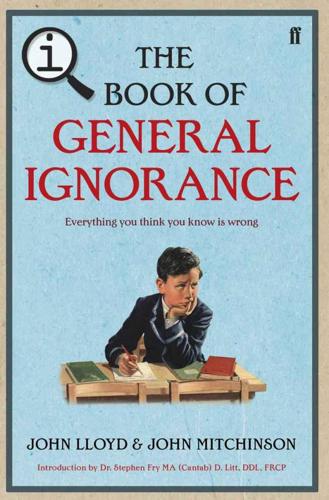
QI: The Book of General Ignorance - The Noticeably Stouter Edition
by
Lloyd, John
and
Mitchinson, John
Published 7 Oct 2010
It was first used to describe a harmful microorganism in 1871 but it wasn’t until 1875 that Robert Koch finally demonstrated that anthrax was caused by a particular species of bacteria. Thirty-five years earlier, Ignaz Semmelweis, a Hungarian doctor had set up the first hygienic hospital ward in Vienna General Hospital. He noticed that the death rate of poor women attended by the nurse midwives was three times less than that of the wealthier women attended by the doctors. He concluded that this was a matter of cleanliness – the doctors used to go directly from the morgue to the obstetrics ward without washing their hands. When he presented his findings, his fellow doctors rejected his theory, unable to believe in what they could not see.
…
The latter, able to wash and dry 200 dishes in two minutes, was the sensation of the 1893 Chicago World’s Fair, and won first prize for the ‘best mechanical construction for durability and adaptation to its line of work’. At $250 each, however, the machines were too expensive for home use, but enough were sold to hotels and restaurants to keep Cochran’s Crescent Washing Machine Company in business until her death in 1913. Other mechanical dishwashers had been developed (and patented) in the US between 1850 and 1865 (all of them, it seems, by women) but none of them really worked. A hand-cranked wooden machine was invented and patented in 1850 by Joel Houghton.
…
In 1976, the Department of Health urged pregnant mothers to wear rubber gloves when peeling potatoes and more than a kilogram (2.2 lb) of potatoes eaten at a single sitting would be certain death. Fortunately for smokers, most of the nicotine in a cigarette is burned before it ever gets to the lungs. The other good news is, it doesn’t stain your fingers or your teeth or the ceiling of the pub. It’s not only colourless but soluble in water, so it comes off when you wash your hands. The stain on a smoker’s fingers is caused by tar. The scientific name for tobacco is Nicotiana tabacum. The name of the plant and the word nicotine derive from Jean Nicot (1530–1604), French ambassador to Lisbon, and the man who first introduced tobacco to France in 1560. He originally promoted it as a medicine, believing it healed wounds and cured cancers, and sent some, in the form of snuff, to Catherine de Medici, Queen of France.
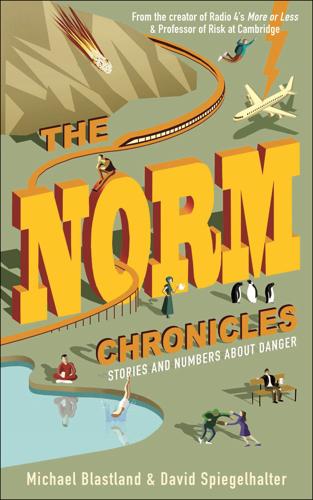
The Norm Chronicles
by
Michael Blastland
Published 14 Oct 2013
Doctors and hospitals killed most of these mothers, not labour itself. If we compare their mortality rate to the natural rate, it implies that three out of four maternal deaths at these institutions were directly caused by medical professionals more deadly than the Taliban. In Vienna in 1848, a Hungarian doctor, Ignaz Semmelweis, was an exception. He compared two clinics, one for training medical students and one run by midwives. The medical students had two or three times the midwives’ rate of maternal mortality, averaging about 10 per cent, ten times the Stone-Age rate. In one month, December 1842, Semmelweis reported 75 deaths from 239 births, for a truly incredible rate of almost one in three mothers dying during or after childbirth.
…
The hospital was a slaughterhouse. Eventually, he found out that the students – and their professors – went from handling corpses in autopsies to examining women in labour without thinking to wash their hands. He concluded that they were carrying ‘cadaverous particles’ and that it would be safer to give birth in the streets. Some women preferred to do just that if they went into labour on the day of a student clinic. Semmelweis instituted hand-washing with chlorine. The death rate dropped in one month from 18 per cent to 2 per cent. But his genius proved unhealthy. He was dismissed, moved to Pest, ever more disturbed by the general dismissal of his opinions, and wrote offensive letters to major obstetricians throughout Europe calling them murderers, with some justification.
…
.* She became protector, haven, she-wolf, sniffing danger like a forest animal. Other children were germy, snotty, clumsy, other. Fungus and barbed wire, on legs. Watch her now in the loo, with thighs of iron, paisley skirt hoisted to her armpits, hovering. See how vigorously she then washes her hands. Meanwhile, notice Prudence in the pushchair reach out with infant curiosity to touch … ‘No, no, no! Dirty Prudence. Don’t … ever … Over here …’ ‘Mama.’ ‘Hands …’ ‘Huh …’ ‘Oh you haven’t? You have. All right. Legs up. Nappy … don’t touch. Whoops. Where are the wipes?’ Wipes. Trusted companions. First line of defence in the war with dirt. Prudence would learn from an early age never, never to take peanut butter sandwiches onto school premises, never to mix the knives used for raw chicken.
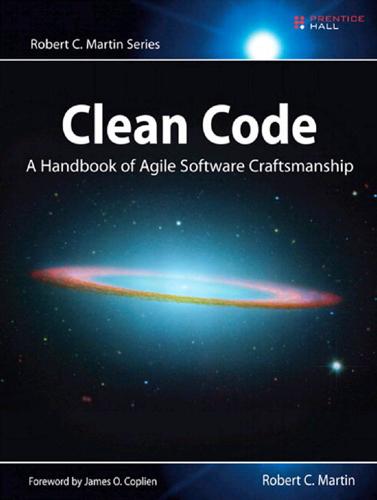
Clean Code: A Handbook of Agile Software Craftsmanship
by
Robert C. Martin
Published 1 Jan 2007
To drive this point home, what if you were a doctor and had a patient who demanded that you stop all the silly hand-washing in preparation for surgery because it was taking too much time?2 Clearly the patient is the boss; and yet the doctor should absolutely refuse to comply. Why? Because the doctor knows more than the patient about the risks of disease and infection. It would be unprofessional (never mind criminal) for the doctor to comply with the patient. 2. When hand-washing was first recommended to physicians by Ignaz Semmelweis in 1847, it was rejected on the basis that doctors were too busy and wouldn’t have time to wash their hands between patient visits. So too it is unprofessional for programmers to bend to the will of managers who don’t understand the risks of making messes.
…
You can instrument your code and force it to run in different orderings by adding calls to methods like Object.wait(), Object.sleep(), Object.yield() and Object.priority(). Each of these methods can affect the order of execution, thereby increasing the odds of detecting a flaw. It’s better when broken code fails as early and as often as possible. There are two options for code instrumentation: • Hand-coded • Automated Hand-Coded You can insert calls to wait(), sleep(), yield(), and priority() in your code by hand. It might be just the thing to do when you’re testing a particularly thorny piece of code. Here is an example of doing just that: public synchronized String nextUrlOrNull() { if(hasNext()) { String url = urlGenerator.next(); Thread.yield(); // inserted for testing.
…
Listing 9-1 SerializedPageResponderTest.java public void testGetPageHieratchyAsXml() throws Exception { crawler.addPage(root, PathParser.parse(“PageOne”)); crawler.addPage(root, PathParser.parse(“PageOne.ChildOne”)); crawler.addPage(root, PathParser.parse(“PageTwo”)); request.setResource(“root”); request.addInput(“type”, “pages”); Responder responder = new SerializedPageResponder(); SimpleResponse response = (SimpleResponse) responder.makeResponse( new FitNesseContext(root), request); String xml = response.getContent(); assertEquals(“text/xml”, response.getContentType()); assertSubString(“<name>PageOne</name>”, xml); assertSubString(“<name>PageTwo</name>”, xml); assertSubString(“<name>ChildOne</name>”, xml); } public void testGetPageHieratchyAsXmlDoesntContainSymbolicLinks() throws Exception { WikiPage pageOne = crawler.addPage(root, PathParser.parse(“PageOne”)); crawler.addPage(root, PathParser.parse(“PageOne.ChildOne”)); crawler.addPage(root, PathParser.parse(“PageTwo”)); PageData data = pageOne.getData(); WikiPageProperties properties = data.getProperties(); WikiPageProperty symLinks = properties.set(SymbolicPage.PROPERTY_NAME); symLinks.set(“SymPage”, ”PageTwo”); pageOne.commit(data); request.setResource(“root”); request.addInput(“type”, ”pages”); Responder responder = new SerializedPageResponder(); SimpleResponse response = (SimpleResponse) responder.makeResponse( new FitNesseContext(root), request); String xml = response.getContent(); assertEquals(“text/xml”, response.getContentType()); assertSubString(“<name>PageOne</name>”, xml); assertSubString(“<name>PageTwo</name>”, xml); assertSubString(“<name>ChildOne</name>”, xml); assertNotSubString(“SymPage”, xml); } public void testGetDataAsHtml() throws Exception { crawler.addPage(root, PathParser.parse(“TestPageOne”), ”test page”); request.setResource(“TestPageOne”); request.addInput(“type”, ”data”); Responder responder = new SerializedPageResponder(); SimpleResponse response = (SimpleResponse) responder.makeResponse( new FitNesseContext(root), request); String xml = response.getContent(); assertEquals(“text/xml”, response.getContentType()); assertSubString(“test page”, xml); assertSubString(“<Test”, xml); } For example, look at the PathParser calls. They transform strings into PagePath instances used by the crawlers. This transformation is completely irrelevant to the test at hand and serves only to obfuscate the intent. The details surrounding the creation of the responder and the gathering and casting of the response are also just noise. Then there’s the ham-handed way that the request URL is built from a resource and an argument. (I helped write this code, so I feel free to roundly criticize it.) In the end, this code was not designed to be read. The poor reader is inundated with a swarm of details that must be understood before the tests make any real sense.
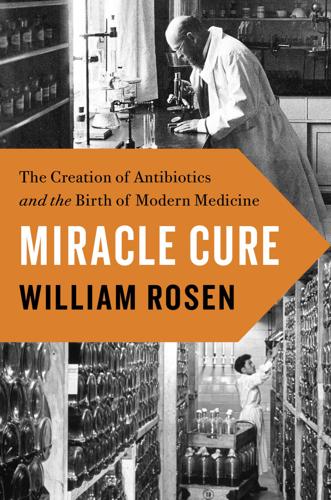
Miracle Cure
by
William Rosen
Published 14 Apr 2017
The risks of contracting such a fever, however, skyrocketed with the growth of hospital births during the nineteenth century. By the time the Hungarian physician Ignaz Semmelweis, then working at Vienna General Hospital, published a study of childbed fever in 1847, it was attacking as many as four new mothers in ten. Tellingly, Semmelweis discovered that the risks of childbed fever were significantly lower in home births than obstetrics wards. The cause, in the days before Lister, was the way physicians practiced their craft: never washing their hands.* Improved hygiene and antisepsis reduced the numbers of victims substantially, but did not eliminate the risk of disease.
…
Describing the magnetized iron balls needed to mix the droplets under investigation, he wrote, “Steel-bearing balls, 1/16 in. in diameter, are given several coats of Bakelite varnish . . . the balls are then heated to 100° in paraffin wax for some minutes, the surplus wax being removed by rolling the balls on hot filter paper. . . . They are then rolled in the palm of a warm, but clean and dry hand with some well washed kaolin. . . .” The article was the first time the peculiar mix of talents of the Dunn team stood revealed. It also marked, or rather caused, a permanent breach in the relationship between Heatley and Chain. From that moment forward, at Heatley’s insistence, and with Florey’s tacit approval, all communication and direction for the young man from Kent would come from the Dunn School’s director, rather than its chief biochemist.
…
As he described in a now-classic paper written for the Lancet, Fleming exposed two sets of glass tubes to a highly concentrated bacterial soup. One set was left whole, while the other was broken to create a ragged edge that would simulate a battlefield wound. After both were washed with antiseptics, the unbroken test tubes were completely disinfected, but the bacteria in the broken tube’s hidden recesses stubbornly reappeared, even after washing in carbolic acid. Fleming had demonstrated experimentally why even unbloodied uniforms from soldiers with supposedly disinfected wounds remained rife with pathogens. Dangerous ones. Fifteen percent of battlefield wounds contained staph, 30 percent tetanus, 40 percent strep . . . and 90 percent were infected with the gangrene-causing C. perfringens.
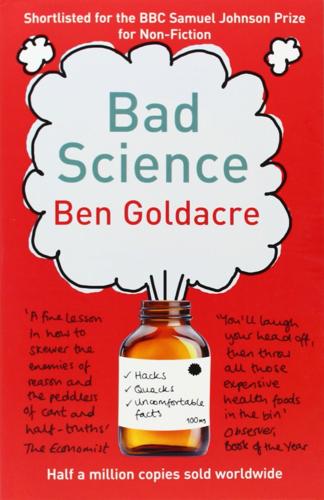
Bad Science
by
Ben Goldacre
Published 1 Jan 2008
Looking even further back, there was a strong anti-smallpox-vaccine movement in Leicester well into the 1930s, despite its demonstrable benefits, and in fact anti-inoculation sentiment goes right back to its origins: when James Jurin studied inoculation against smallpox (finding that it was associated with a lower death rate than the natural disease), his newfangled numbers and statistical ideas were treated with enormous suspicion. Indeed, smallpox inoculation remained illegal in France until 1769.* ≡ Disdain for statistics in healthcare research wasn’t unusual at the time: Ignaz Semmelweis noticed in 1847 that patients were dying much more frequently on the obstetrics ward run by the medical students than on the one run by the midwifery students (this was in the days when students did all the legwork in hospitals). He was pretty sure that this was because the medical students were carrying something nasty from the corpses in the dissection room, so he instituted proper handwashing practices with chlorinated lime, and did some figures on the benefits.
…
Is there anything else you can do to get blood and oxygen to your brain more efficiently? Yes, an exercise called ‘Brain Buttons’: ‘Make a ‘C’ shape with your thumb and forefinger and place on either side of the breastbone just below the collarbone. Gently rub for twenty or thirty seconds whilst placing your other hand over your navel. Change hands and repeat. This exercise stimulates the flow of oxygen carrying blood through the carotid arteries to the brain to awaken it and increase concentration and relaxation.’ Why? ‘Brain buttons lie directly over and stimulate the carotid arteries.’ Children can be disgusting, and often they can develop extraordinary talents, but I’m yet to meet any child who can stimulate his carotid arteries inside his ribcage.
…
If that sounds obvious, I should say they have an effect which has been measured, elegantly, in carefully designed trials. Gryll and Katahn [1978] gave patients a sugar pill before a dental injection, but the doctors who were handing out the pill gave it in one of two different ways: either with an outrageous oversell (‘This is a recently developed pill that’s been shown to be very effective…effective almost immediately…’); or downplayed, with an undersell (‘This is a recently developed pill…personally I’ve not found it to be very effective…’). The pills which were handed out with the positive message were associated with less fear, less anxiety and less pain. Even if he says nothing, what the doctor knows can affect treatment outcomes: the information leaks out, in mannerisms, affect, eyebrows and nervous smiles, as Gracely [1985] demonstrated with a truly ingenious experiment, although understanding it requires a tiny bit of concentration.

Super Thinking: The Big Book of Mental Models
by
Gabriel Weinberg
and
Lauren McCann
Published 17 Jun 2019
Instead of helping to investigate Wegener’s theory (which certainly wasn’t perfect but had promise), geologists chose to hold on to this incorrect land bridge theory until the evidence for continental drift was so overwhelming that a paradigm shift occurred. Gondwanian Bridges The work of Ignaz Semmelweis, a nineteenth-century Hungarian doctor, met a similar fate. He worked at a teaching hospital where doctors routinely handled cadavers and also delivered babies, without appropriately washing their hands in between. The death rate of mothers who gave birth in this part of the hospital was about 10 percent! In another part of the same hospital, where babies were mostly delivered by midwives who did not routinely handle cadavers, the comparable death rate was 4 percent.
…
In another part of the same hospital, where babies were mostly delivered by midwives who did not routinely handle cadavers, the comparable death rate was 4 percent. Semmelweis obsessed about this difference, painstakingly eliminating all variables until he was left with just one: doctors versus midwives. After studying doctor behavior, he concluded that it must be due to their handling of the cadavers and instituted a practice of washing hands with a solution of chlorinated lime. The death rate immediately dropped to match that in the other part of the hospital. Despite the clear drop in the death rate, his theories were completely rejected by the medical community at large. In part, doctors were offended by the idea that they were killing their patients.
…
This phrase is called Maslow’s hammer and is derived from this longer passage by psychologist Abraham Maslow in his 1966 book The Psychology of Science: I remember seeing an elaborate and complicated automatic washing machine for automobiles that did a beautiful job of washing them. But it could do only that, and everything else that got into its clutches was treated as if it were an automobile to be washed. I suppose it is tempting, if the only tool you have is a hammer, to treat everything as if it were a nail. The hammer of decision-making models is the pro-con list; useful in some instances, but not the optimal tool for every decision.
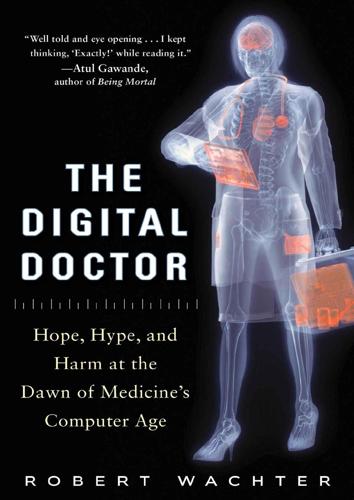
The Digital Doctor: Hope, Hype, and Harm at the Dawn of Medicine’s Computer Age
by
Robert Wachter
Published 7 Apr 2015
—Hippocrates, Precepts You’ve probably played that parlor game in which you fantasize about what it would be like to have a drink with one of the great figures in history. Perhaps you’d choose Shakespeare, or Churchill, or Einstein. They all sound great to me. But as a doctor and a student of health policy, I would sooner choose Ignaz Semmelweis, the nineteenth-century Hungarian physician whose pioneering work on antisepsis led him to be committed to an asylum for heresy; Sir William Osler, who articulated many of the key principles of medical diagnosis and treatment; or Avedis Donabedian, whose insights transformed our understanding of healthcare quality.
…
The nurse had already gathered some history before Sinsky entered the room to see her first patient, an elderly man with white hair and a pot belly; every Christmas, he plays a department store Santa. He was wearing a Harley-Davidson T-shirt that said “Motorcycles: Ride Free, Live Free.” On the wall of the small room was a series of colorful posters, one showing the four food groups and another instructing people to wash their hands. A third showed a child’s drawing of a bunch of flowers with the caption, “Don’t regret growing old. It is a privilege denied to many.” Sinsky sat knee-to-knee with her patient. Her laptop was open on her desk, but she was working hard to maintain eye contact. After gathering some of the history, she activated her computer’s dictation system.
…
There’s a movement in medicine to practice in a more “patient-centered” way, a major part of which is to involve patients in their own care. One arm of this movement highlights the role of patients and their families in protecting themselves, such as having patients ask their doctors and nurses whether they have washed their hands. While many (including myself) are skeptical about how effective this is and whether it places an inappropriate burden on patients and their families, there are clearly times when patients or their loved ones are highly aware of their treatment plans and can participate meaningfully in catching errors.

Human Frontiers: The Future of Big Ideas in an Age of Small Thinking
by
Michael Bhaskar
Published 2 Nov 2021
And about how, brick by brick, that capacity is being chipped away. Society has never been kind to big thinkers. Ask Socrates. Ask Jesus. Ask the astronomer Giordano Bruno, who was hung upside down naked before being burned at the stake for his heretical – what we would now call scientific – ideas. Ignaz Semmelweis was crushed by lack of recognition for his theories about hand washing, an innovation which would eventually save millions of lives – put in an asylum, he was beaten by guards and died from an infection. During the heat of the Second Industrial Revolution the Italian Ministry of Post and Telegraphs suggested Guglielemo Marconi be referred to an insane asylum.94 Even in Vienna's crucible of thought, Freud was ridiculed and dismissed.
…
For centuries economics was plagued by a contradiction. On the one hand, economic thought suggested that competition in free markets eliminated competitive advantage; eventually everyone reaches the same point and diminishing returns set in. On the other hand, there was evidence that efficiencies produced by increasing scale could, against the idea of open competition, maintain growth. Both strands go back to Adam Smith's foundational work: on the one hand his pin factory, which, as it grows and creates new specialisations, produces ever more pins. And on the other the invisible hand, working its magic, leading markets towards the nirvana of equilibrium.
…
The most challenging task in my career has become an undergraduate project overnight.’ 48 But it is still only the beginning – a stage akin to computers fifty years ago, with all the general-purpose promise that implies.49 Synthetic biology is the emerging discipline of designing and building organisms. It could follow a trajectory similar to information technologies. In the 1960s semiconductor circuits were still hand-carved with a scalpel. They now exhibit a mind-boggling complexity, squeezing billions of transistors into our pockets (11 billion alone on a single iPhone CPU, performing well over a trillion operations a second). What if the construction of organisms followed a similar curve, engineered at atomic detail, moving from painstaking hand work on the lab bench to the equivalent of a smartphone-producing industrial process? Just as computeraided design enhanced airplanes and circuits, so it will genetic engineering.
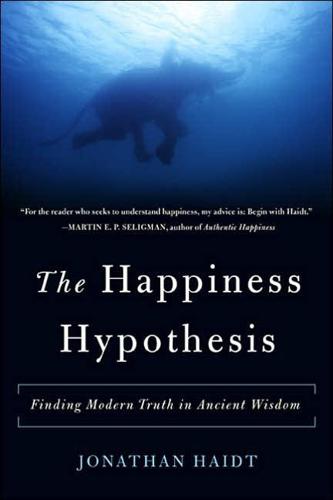
The Happiness Hypothesis: Finding Modern Truth in Ancient Wisdom
by
Jonathan Haidt
Published 26 Dec 2005
My father recovered with no paralysis, but this i m a g e has always stayed with m e : a small boy alone in a room, gazing at his m o t h e r through a p a n e of glass. My father had the bad luck to be born at the confluence point of three big ideas. The first was germ theory, proposed in the 1840s by Ignaz Semmelweis and incorporated into hospitals and homes with gradually increasing ferocity over the next century. When they began to collect statistics from orphanages and foundling homes in the 1920s, pediatricians came to fear germs above all else. As far back as records went, they showed that most children dropped off at foundling homes died within one year.
…
In some split-brain patients, or in others who have suffered damage to the corpus callosum, the right hemisphere seems to be actively fighting with the left hemisphere in a condition known as alien hand syndrome. In these cases, one hand, usually the left, acts of its own accord and seems to have its own agenda. T h e alien hand may pick up a ringing phone, but then refuse to pass the p h o n e to the other hand or bring it up to an ear. The hand rejects choices the person has just made, for example, by putting back on the rack a shirt that the other hand has just picked out. It grabs the wrist of the other hand and tries to stop it from executing the person's conscious plans. Sometimes, the alien hand actually reaches for the person's own neck and tries to strangle him.13 T h e s e dramatic splits of the mind are c a u s e d by rare splits of the brain.
…
Hindu homes in Bhubaneswar have the same concentric structure as the temples: Leave your shoes at the door, socialize in the outer r o o m s , but never go into the kitchen or the room or area where offerings are m a d e to deities. T h e s e two areas are maintained as zones of the highest purity. Even the human body has peaks and valleys, the head and the right hand being pure, the left hand and the feet being polluted. I had to take extraordinary care to keep my feet from touching anyone and to avoid handing s o m e t h i n g to another person with my left hand. As I moved around Bhubaneswar, I felt like a square in Spaceland as I tried to navigate a three-dimensional world with only the dimmest perception of its third dimension. T h e interviews I conducted helped me to see a little better.

Your Face Belongs to Us: A Secretive Startup's Quest to End Privacy as We Know It
by
Kashmir Hill
Published 19 Sep 2023
“Media,” he replied, relaxing into his chair and putting down his phone. “Media.” Ton-That had compared himself at one point to Ignaz Semmelweis, a Hungarian doctor from the early 1800s who had tried to convince other doctors to wash their hands before attending to women in childbirth. Semmelweis published studies showing that hand washing reduced mortality rates among the women, but he couldn’t explain why, so doctors refused to do it. Semmelweis died in a mental asylum, his advice unheeded. Hand washing wasn’t embraced until the discovery of the relationship between germs and disease years later. Once a person has discovered something extraordinary, said Ton-That, “the real job is to sell it to the public and get people comfortable with it.”
…
Glasses,” New York Times, February 4, 2022. GO TO NOTE REFERENCE IN TEXT “Hoan, stay focused”: Author’s interviews with Hoan Ton-That and Lisa Linden, 2021. GO TO NOTE REFERENCE IN TEXT tried to convince other doctors: Rebecca Davis, “The Doctor Who Championed Hand-Washing and Briefly Saved Lives,” NPR, January 12, 2015. GO TO NOTE REFERENCE IN TEXT “It’s time for the world”: Ibid. GO TO NOTE REFERENCE IN TEXT INDEX The page numbers in this index refer to the printed version of the book. Each link will take you to the beginning of the corresponding print page.
…
She looked directly into the camera, and a white square appeared over her face. “So there it detects that it’s a face,” said Brian, seeming relieved. And then the square turned blue. “It actually shows that it’s a male face, so there we go,” he awkwardly acknowledged, putting his hand in front of the camera in the hope of resetting the algorithm’s thinking. He removed his hand, and the square came back. It was still blue. Instead of the shower gel ad intended for feminine faces, the car ad kept playing over and over: “Style…Performance…POWER.” “So people have asked about accuracy,” Brian said, to laughter from the audience.

Nine Pints: A Journey Through the Money, Medicine, and Mysteries of Blood
by
Rose George
Published 22 Oct 2018
This consisted of “lightly wounded men, dental patients, and men suffering from sprains, flat feet and minor injuries.”55 Soldier donors weren’t paid but they were soon offered three weeks’ leave in England, a powerful incentive.56 Harvey Cushing reported that when volunteers were sought for transfusion experiments, and “Blighty leave” given as inducement, they came “like trout to a fly.”57 But the wartime spirit of comradeship did not survive the transition to peace, and the notion of an organized system of blood donation faltered. The medical profession applied its Semmelweis reflex, a refusal to accept change, named after Ignaz Semmelweis, who realized that doctors delivering babies after performing autopsies were lethally unhygienic but was scorned for decades. When it came to storing blood, “the feeling in England,” wrote Victor Horsley Riddell, “is that this is carrying change too far.”58 Surgeons and doctors stuck to what they knew: blood should be used fresh if it was used at all.
…
I meet Ankita and Khushi in a schoolyard in Uttar Pradesh. I am traveling across India with a sanitation carnival called the Great WASH Yatra. Great, because its ambitions were big: five states, 1,243 miles. WASH, because that was what its ambitions consist of: to spread knowledge about water, sanitation, and hygiene (these are usually given the acronym WASH). And yatra, a Hindi word for a procession, pilgrimage, journey. In each state, the Yatra sets up shop: a central stage, and dozens of stalls housing games and entertainment, all promoting better hygiene, hand washing, the use of toilets. One morning, I wake early and emerge from the dorm room to see half a dozen policemen earnestly playing a game of poop chess (where a blindfolded player has to navigate between turds and find the soap).
…
Our knowledge of blood is wide and unfinished. * * * Find yourself a blue coat first. There are plenty in the cupboard that look grubby but smell clean. Then sit on the bench provided and put your hair in a bonnet, something like a shower cap, and wrap your shoes in plastic. Follow the instructions above the basin and wash your hands thoroughly. No, more thoroughly. That’s enough: they relaxed the restrictions a few years ago so you no longer have to wrap your beard or wear a snood. The pressure chamber now: this arrangement will be familiar to anyone who has been to a bank or traveled on a submarine. You step in and wait for one door to close before the other can be opened.
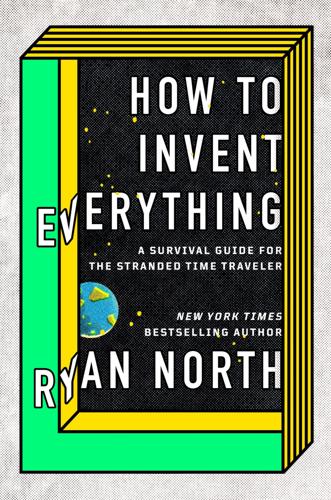
How to Invent Everything: A Survival Guide for the Stranded Time Traveler
by
Ryan North
Published 17 Sep 2018
* While hydrocarbons cannot actually experience the emotions of love and hate, the phrases “loves water” and “hates oil” are easier to understand than the more technically correct terms of “hydrophilic” (attracts water) and “lipophobic” (repels oil). * This idea was first proposed by a Dr. Ignaz Semmelweis in 1847 CE. He worked at a hospital with two maternity clinics: one staffed with midwife students, and the other with medical students who performed autopsies before assisting in births, all while never washing their hands. After noticing the mothers at the med student clinic would get vaginal infections so horrible it killed them as much as 30 percent of the time (compared to around 5 percent at the midwife clinic), Doc Semmelweis introduced a hand-washing regimen. Death rates from infection dropped to 1 percent in both clinics.
…
—You (also, Jean Anouilh) WHAT IT IS A substance that keeps you clean, in both the “get that dirt off you” sense and the “thanks to the germ theory of disease we know that even superficially clean skin can still carry harmful microbes so wash your dang hands with soap and water before you stick them in your mouth” sense BEFORE IT WAS INVENTED Washing, bathing, bacteria-avoidance, and general cleanliness were more difficult, because there was no substance that would lift up oils in water. On the plus side, you could visit your grandparents and say whatever swears you wanted all day long and they couldn’t wash your mouth out with anything. ORIGINALLY INVENTED 2800 BCE PREREQUISITES for lousy soap: olive oil and lime (see Appendix C.3); for better soap: potash or soda ash, salt; for great soap: lye HOW TO INVENT The olive-oil-and-lime “soap” (the “lousy soap” mentioned above) is the easiest to make: just mix olive oil and lime together (or sand, if you don’t have any lime), rub it all over, then scrape it off.
…
Death rates from infection dropped to 1 percent in both clinics. At the time, the causes of disease were considered to be unique to each patient, and the notion that disease could be prevented simply by washing hands was thought extreme. After being dismissed from the hospital, Semmelweis wrote letters to other doctors urging them to wash their hands, and when that failed, he wrote new letters denouncing them as murderers. For his efforts he was committed to an insane asylum in 1865, where he died fourteen days later—from an infected wound he contracted after being beaten by guards. The idea that cleanliness could stop infection didn’t gain acceptance until twenty years after he died—when we finally realized germs were a thing—and today, the way humans can quickly and almost reflexively reject information that contradicts their established beliefs is named the Semmelweis reflex
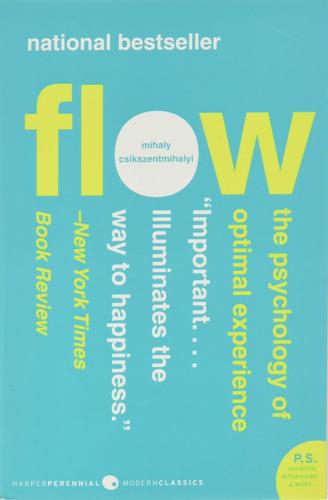
Flow: The Psychology of Optimal Experience
by
Mihaly Csikszentmihalyi
Published 1 Jul 2008
In one of our studies the list of admired persons included an old lady who, despite her paralysis, was always cheerful and ready to listen to other people’s troubles; a teenage camp counselor who, when a swimmer was missing and everybody else panicked, kept his head and organized a successful rescue effort; a female executive who, despite ridicule and sexist pressures, prevailed in a difficult working environment; and Ignaz Semmelweis, the Hungarian physician who in the last century insisted that the lives of many mothers could be saved at childbirth if obstetricians would only wash their hands, even though the rest of the doctors ignored and mocked him. These and the many hundreds of others mentioned were respected for the same reasons: They stood firm for what they believed in, and didn’t let opposition daunt them.
…
In that respect, an autotelic person’s behavior is both more consistent and more flexible. 2. Becoming immersed in the activity. After choosing a system of action, a person with an autotelic personality grows deeply involved with whatever he is doing. Whether flying a plane nonstop around the world or washing dishes after dinner, he invests attention in the task at hand. To do so successfully one must learn to balance the opportunities for action with the skills one possesses. Some people begin with unrealistic expectations, such as trying to save the world or to become millionaires before the age of twenty. When their hopes are dashed, most become despondent, and their selves wither from the loss of psychic energy expended in fruitless attempts.
…
What he does is this: Whenever a speaker begins to get tedious, he starts to tap his right thumb once, then the third finger of the right hand, then the index, then the fourth finger, then the third finger again, then the little finger of the right hand. Then he moves to the left hand and taps the little finger, the middle finger, the fourth finger, the index, and the middle finger again, and ends with the thumb of the left hand. Then the right hand reverses the sequence of fingering, followed by the reverse of the left hand’s sequence. It turns out that by introducing full and half stops at regular intervals, there are 888 combinations one can move through without repeating the same pattern.

More: The 10,000-Year Rise of the World Economy
by
Philip Coggan
Published 6 Feb 2020
In the second half of the 19th century, life expectancy also started to make significant gains. One reason was that scientists developed the germ theory of disease, and realised the terrible effects of insanitary conditions. It took time for these theories to be accepted. In 1847, Ignaz Semmelweis, a Hungarian obstetrician, correctly identified that puerperal fever was spread by doctors, and insisted that his colleagues wash their hands. But although the death rate of new mothers fell dramatically, his theory was not widely acknowledged. Semmelweis had a nervous breakdown and was beaten to death by guards in an insane asylum, never knowing that his ideas would become widely approved.100 In 1854, John Snow, a doctor who had written about cholera transmission, successfully traced an outbreak of the disease to a water pump in London: when the pump was taken out of service, cholera cases declined.101 Between 1859 and 1870, a team led by Joseph Bazalgette created a network of sewers under London that stretched for 550 miles (885km) and connected to a network that was 13,000 miles (21,000km) in all.
…
My wife’s grandfather, Sally at birth, became Sol when he reached America. Immigrants were supposed to have $15 with them so that they could make a start in life; not an easy thing in the days before foreign exchange bureaux. The story is that some inspectors kept $15 with them so that they could hand it over to immigrants in order for them to pass the test, whereupon the money was handed back. All told, the rejection rate at Ellis Island was just 2%, half for medical and half for legal reasons. If you passed the inspectors, you headed back down the stairs to collect your baggage. You could buy a ticket to anywhere in America. Around a third of those who passed through Ellis Island stayed in New York in one of the many enclaves for immigrants, like German-town or Little Odessa.
…
Any water had to be carried into the house, normally by women, from the village well, or from a river. In terms of entertainment, there were no printed books. In any case, few could read and many had poor eyesight, in the general absence of spectacles. Of course, there was no radio or television. People rarely washed and had very few choices of clothes. Medicine and dentistry were primitive, so woe betide those who got ill. Women had to have several children to ensure that one or two made it to adulthood, but each pregnancy was a high-stakes gamble. More than one in three women died during their childbearing years.8 Life expectancy was under 30.
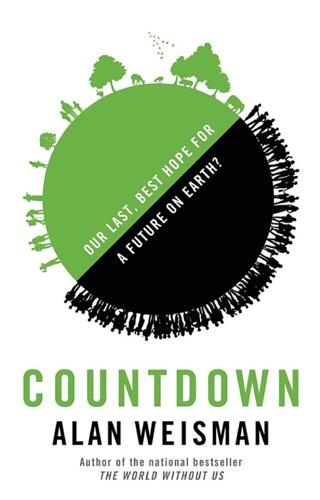
Countdown: Our Last, Best Hope for a Future on Earth?
by
Alan Weisman
Published 23 Sep 2013
ARTICLES Ambrose, Stanley H. “Late Pleistocene Human Population Bottlenecks, Volcanic Winter, and Differentiation of Modern Humans.” Journal of Human Evolution, vol. 34, no. 4 (1998): 623–51. doi: 10.1006/jhev.1998.0219. Best, M., and D. Neuhauser. “Heroes and Martyrs of Quality and Safety: Ignaz Semmelweis and the Birth of Infection Control.” Quality Safe Health Care, vol. 13 (2004): 233–34. doi:10.1136/qshc.2004.010918. Bodnar, Anastasia. “Stress Tolerant Maize for the Developing World—Challenges and Prospects.” Biology Fortified, Inc., website, The Biofortified Blog, March 20, 2010. Borlaug, Norman.
…
Pasteur was also instrumental in convincing humanity that disease did not occur through some mysterious spontaneous generation, but was spread by germs. In the nineteenth century, hand soap became common for the first time, both in homes and in hospitals. Before, patients died as often from infections picked up from a surgeon’s unsterilized hands and scalpel as from the ailment he was trying to fix. One of the first uses of surgical disinfectant was in a maternity ward in Vienna, where doctors washing their hands in a chlorine solution lowered both infant and maternal mortality by a factor of ten—an innovation with a direct impact on the number of living humans.
…
But either we take control ourselves, and humanely bring our numbers down by recruiting fewer new members of the human race to take our places, or nature is going to hand out a pile of pink slips. When you see survival of the fittest portrayed on the National Geographic Channel, it’s entertaining. When it happens to your own species, it’s not pretty. I lingered on the grass by Lake of the Isles until the young mothers with their strollers departed, leaving the early evening joggers. As twilight settled and Jupiter rose in a velvet sky, the path around the lake filled with lovers, young and old. Hand in hand, they represented the grand spectrum that has enriched the city of my birth from its early Scandinavian majority into the splendid swirl that defines our globalized species today: Latino, Caucasian, Asian, African, and Native Americans, joined in the ancient courtship rituals of my fellow humans, doing what comes naturally.
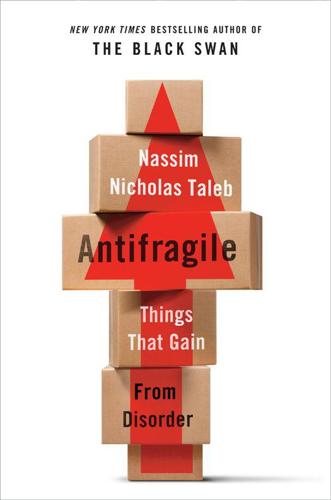
Antifragile: Things That Gain From Disorder
by
Nassim Nicholas Taleb
Published 27 Nov 2012
Thank you, modernity: it was “scientific progress,” the birth of the clinic and its substitution for home remedies, that caused death rates to shoot up, mostly from what was then called “hospital fever”—Leibniz had called these hospitals seminaria mortis, seedbeds of death. The evidence of increase in death rates is about as strong as they come, since all the victims were now gathered in one place: people were dying in these institutions who would have survived outside them. The famously mistreated Austro-Hungarian doctor Ignaz Semmelweis had observed that more women died giving birth in hospitals than giving birth on the street. He called the establishment doctors a bunch of criminals—which they were: the doctors who kept killing patients could not accept his facts or act on them since he “had no theory” for his observations.
…
The fragilista mistakes the economy for a washing machine that needs monthly maintenance, or misconstrues the properties of your body for those of a compact disc player. Adam Smith himself made the analogy of the economy as a watch or a clock that once set in motion continues on its own. But I am certain that he did not quite think of matters in these terms, that he looked at the economy in terms of organisms but lacked a framework to express it. For Smith understood the opacity of complex systems as well as the interdependencies, since he developed the notion of the “invisible hand.” Click here for a larger image of this table.
…
Many things such as society, economic activities and markets, and cultural behavior are apparently man-made but grow on their own to reach some kind of self-organization. They may not be strictly biological, but they resemble the biological in that, in a way, they multiply and replicate—think of rumors, ideas, technologies, and businesses. They are closer to the cat than to the washing machine but tend to be mistaken for washing machines. Accordingly we can generalize our distinction beyond the biological-nonbiological. More effective is the distinction between noncomplex and complex systems. Artificial, man-made mechanical and engineering contraptions with simple responses are complicated, but not “complex,” as they don’t have interdependencies.
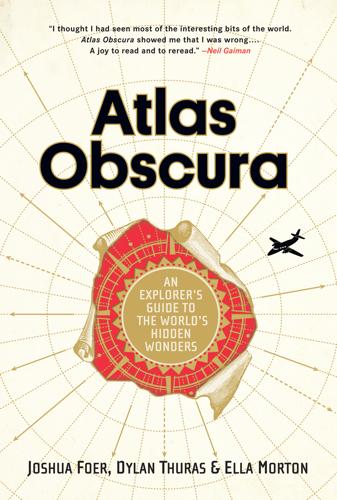
Atlas Obscura: An Explorer's Guide to the World's Hidden Wonders
by
Joshua Foer
,
Dylan Thuras
and
Ella Morton
Published 19 Sep 2016
Kaali Küla, Pihtla vald, Saaremaa. 58.303309 22.70604 A 360-foot-wide basin created by a blazing meteorite. HUNGARY Semmelweis Medical Museum BUDAPEST The Semmelweis Medical Museum contains some fascinating objects: a wax anatomical model with her intestines splayed open, an early X-ray machine, and a shrunken head, all housed in the very building in which Dr. Ignaz Semmelweis was born. However, the most interesting element of the museum is the story of Semmelweis himself. In the 1840s, Semmelweis, a Hungarian physician, was working in a Budapest maternity ward. At the time, a third of new mothers were dying from puerperal sepsis, a bacterial form of septicemia. Semmelweis was horrified by the deaths of these women, but the cause eluded him.
…
Kolletschka perished after accidentally cutting his finger during a postmortem examination. His autopsy showed a similar pathology to the women with puerperal sepsis, leading Semmelweis to conclude that it was the doctors themselves who were causing the deaths of the mothers. Semmelweis implemented a strict hand-washing policy in his clinic, and the death rate quickly fell from 18 percent to 2.2 percent. But even Semmelweis himself couldn’t explain exactly why his method worked. It would be decades before Louis Pasteur confirmed the germ theory of disease. Without this underlying explanation, Semmelweis’s discovery was largely rejected as a “mania.”
…
McElroy Octagon House Cow Hollow · This eight-sided powder-blue home is a rare remnant of the octagon-shaped house-building craze of the second half of the 19th century. Vaillancourt Fountain Embarcadero · Despite drawing criticism since its installation in the early 1970s, this artistic jumble of angular cement pipes stands strong. Westin St. Francis Financial District · Since 1938, this hotel has provided a coin-washing service to prevent guests’ hands being sullied by filthy cash. Corporate Goddess Sculptures Financial District · A dozen eerily faceless, draped figures loom over pedestrians from 23 floors up at 580 California Street. Musée Mécanique Fisherman’s Wharf · Save up your quarters for the world’s largest privately owned collection of coin-operated arcade machines.

Red Rabbit
by
Tom Clancy
and
Scott Brick
Published 2 Jan 2002
When Zaitzev's identity as a Russian citizen had been confirmed, a call had been made to the Soviet Embassy, where it was speedily established that the man in question was a KGB officer. That generated interest in the rezidentura, just across the street from the hotel where he'd ostensibly died, and more telephone calls were made. Before five in the morning, Professor Zoltan Biro was awakened in his bed by the AVH. Biro was professor of pathology at the Ignaz Semmelweis Medical College. Named for one of the fathers of the germ theory that had transformed the science of medicine in the nineteenth century, it remained a good one, even attracting students from West Germany, none of whom would attend the postmortem examinations ordered by the country's Belügyminisztérium, which would also be attended by the physician-in-residence at the Soviet Embassy.
…
By that time, Zaitzev had returned the cipher book to central storage and slipped the message form, plus the translation, into a brown envelope, which he handed to the colonel. "Has anyone seen this?" Rozhdestvenskiy asked. "Certainly not, comrade," Zaitzev replied. "Very well." Colonel Rozhdestvenskiy walked away without another word. For his part, Zaitzev left his work desk and headed off to the cafeteria for lunch. The food was the best reason to work at The Centre. What he could not leave behind as he stopped at the lavatory to wash his hands was the message sequence. Yuriy Andropov wanted to kill the Pope, and the rezident in Rome didn't like the idea.
…
They fax you the Early Bird out of Washington, don't they?" "Yeah, it eventually trickles down here." "Then, day after tomorrow, you can read it," Prince advised, standing to take his leave. "Tell Ernie." "I'll do that," Foley said, extending his hand. Then he decided he'd walk Prince to the elevator. On the way back, he'd hit the men's room to wash his hands. His next stop after that was the Ambassador's office. "Hi, Ed. Meet with that Prince guy?" Foley nodded his head. "Just cut him loose." "Did he nibble at your hook?" "Nope. Just spat it right back at me." Fuller smiled crookedly. "What did I tell you?

Enlightenment Now: The Case for Reason, Science, Humanism, and Progress
by
Steven Pinker
Published 13 Feb 2018
Before the 20th century, cities were piled high in excrement, their rivers and lakes viscous with waste, and their residents drinking and washing their clothes in putrid brown liquid.3 Epidemics were blamed on miasmas—foul-smelling air—until John Snow (1813–1858), the first epidemiologist, determined that cholera-stricken Londoners got their water from an intake pipe that was downstream from an outflow of sewage. Doctors themselves used to be a major health hazard as they went from autopsy to examining room in black coats encrusted with dried blood and pus, probed their patients’ wounds with unwashed hands, and sewed them up with sutures they kept in their buttonholes, until Ignaz Semmelweis (1818–1865) and Joseph Lister (1827–1912) got them to sterilize their hands and equipment.
…
—is not the ultimate cause of wellbeing.”16 The fruits of science are not just high-tech pharmaceuticals such as vaccines, antibiotics, antiretrovirals, and deworming pills. They also comprise ideas—ideas that may be cheap to implement and obvious in retrospect, but which save millions of lives. Examples include boiling, filtering, or adding bleach to water; washing hands; giving iodine supplements to pregnant women; breast-feeding and cuddling infants; defecating in latrines rather than in fields, streets, and waterways; protecting sleeping children with insecticide-impregnated bed nets; and treating diarrhea with a solution of salt and sugar in clean water. Conversely, progress can be reversed by bad ideas, such as the conspiracy theory spread by the Taliban and Boko Haram that vaccines sterilize Muslim girls, or the one spread by affluent American activists that vaccines cause autism.
…
For that reason they mean the world to the millions of people who are not victims but would have been if rates of violence had stayed the same. So you’re saying that we can all sit back and relax, that violence will just take care of itself. Illogical, Captain. If you see that a pile of laundry has gone down, it does not mean the clothes washed themselves; it means someone washed the clothes. If a type of violence has gone down, then some change in the social, cultural, or material milieu has caused it to go down. If the conditions persist, violence could remain low or decline even further; if they don’t, it won’t. That makes it important to find out what the causes are, so we can try to intensify them and apply them more widely to ensure that the decline of violence continues.

The Pursuit of Power: Europe, 1815-1914
by
Richard J. Evans
Published 31 Aug 2016
Until the advent of anaesthetics, surgeons prided themselves in sawing off a leg in a matter of minutes, but while this might reduce the suffering of the patient it did not mean the operation was going to be successful, especially since surgeons did not wash their hands or sterilize their equipment and reused old bandages without disinfecting them. The risks of infection in hospitals more generally were first recognized by the Hungarian physician Ignaz Semmelweis (1818–65), who in 1847 observed that around a third of the women who gave birth on the doctors’ wards in the Vienna General Hospital, where he worked, died of ‘puerperal fever’, whereas the death rate on the midwives’ wards was only around 10 per cent. Noticing that medical students came to the delivery room straight from dissecting corpses without washing their hands, Semmelweis put a basin of chlorinated water outside the delivery room and instructed all students to use it to disinfect themselves before entering.
…
Constantly harassed by Cossacks, scavenging for food, cold, dirty and hungry, robbed by bandits, and narrowly escaping death on numerous occasions, Walter somehow survived the ordeal. On finding regular quarters, for the first time in many weeks, in a Polish town, he gave himself a wash: The washing of my hands and face proceeded very slowly because the crusts on my hands, ears, and nose had grown like fir-bark, with cracks and coal-black scales. My face resembled that of a heavily bearded Russian peasant; and, when I looked into the mirror, I was astonished myself at the strange appearance of my face. I washed, then, for an hour with hot water and soap. All attempts to rid himself and his clothing of lice (‘my “sovereigns” ’) proved futile, however.
…
Nicholas abolished the Polish constitution, along with the Diet and the army, brought Russians in to run the administration, and ruled henceforth by military decree. The universities were closed down and the library was seized. From 1839 study abroad was banned, the publication of books on history and social studies was halted, the works of national poets were suppressed. So angry was the tsar at the uprising that at one stage he even proposed to wash his hands of the Poles by ceding all their territory to Austria and Prussia. Although his ministers calmed him down, the legacy of the conflict was a new bitterness in relations between Poland and Russia, equally vehement on both sides. Nicholas eventually contented himself with abolishing the provincial administrative structure of the Kingdom.

Home Comforts: The Art and Science of Keeping House
by
Cheryl Mendelson
Published 4 Nov 1999
This is accomplished in four ways: frequent washing of hands; frequent and thorough surface cleaning followed, in appropriate circumstances, by a judicious use of disinfectants; the use of noncontaminated and noncontaminating tools and materials in cleaning; and keeping things dry. WASHING HANDS IS CRUCIAL Aseptic techniques were introduced in medicine in the nineteenth century, when Dr. Ignaz Semmelweis, a Hungarian obstetrician, noticed that the washing of hands in obstetrical units greatly reduced the incidence of puerperal fever (postpartum infection of the uterus). Even today, contaminated hands continue to be a major source of hospital infections, and the washing of hands continues to be the major defense against the spread of infection in hospitals.
…
Wash your hands especially carefully after using the toilet, changing a baby’s diaper, blowing your nose, or touching a pet, a cage, or the cat-litter box. Wash your hands before you cook anything. Not only that, continue to wash your hands throughout the cooking process, especially after you have handled anything raw or likely to harbor pathogens. This means washing your hands before and after you cut up raw poultry, fish, meat, or any other animal food. (Then wash and sanitize your chopping boards and implements too.) Wash your hands before and after handling raw fruits or vegetables. Wash your hands when you have finished handling one foodstuff and are going to work on another. Cover cuts, sores, or boils on your hands or face with a waterproof dressing or wear disposable plastic gloves.
…
Even today, contaminated hands continue to be a major source of hospital infections, and the washing of hands continues to be the major defense against the spread of infection in hospitals. The same is true in your home. Washing Hands The Importance of Washing Your Hands. Our hands are probably the most important means by which nonairborne and nonwaterborne pathogens in our homes are spread to surfaces and other people. Frequent hand washing is one of the most important means we have of defending against pathogens in the home. Remember to wash your hands after using the toilet, changing a diaper, emptying a diaper pail, cleaning the toilet, or accidentally touching the toilet-bowl brush or changing table; after handling raw meat or poultry or touching any material with which they were in contact; after touching or cleaning pets, litter boxes, or cages; or after scrubbing floors or doing any dirty job around the house or yard.